Photo: Bethany Reed
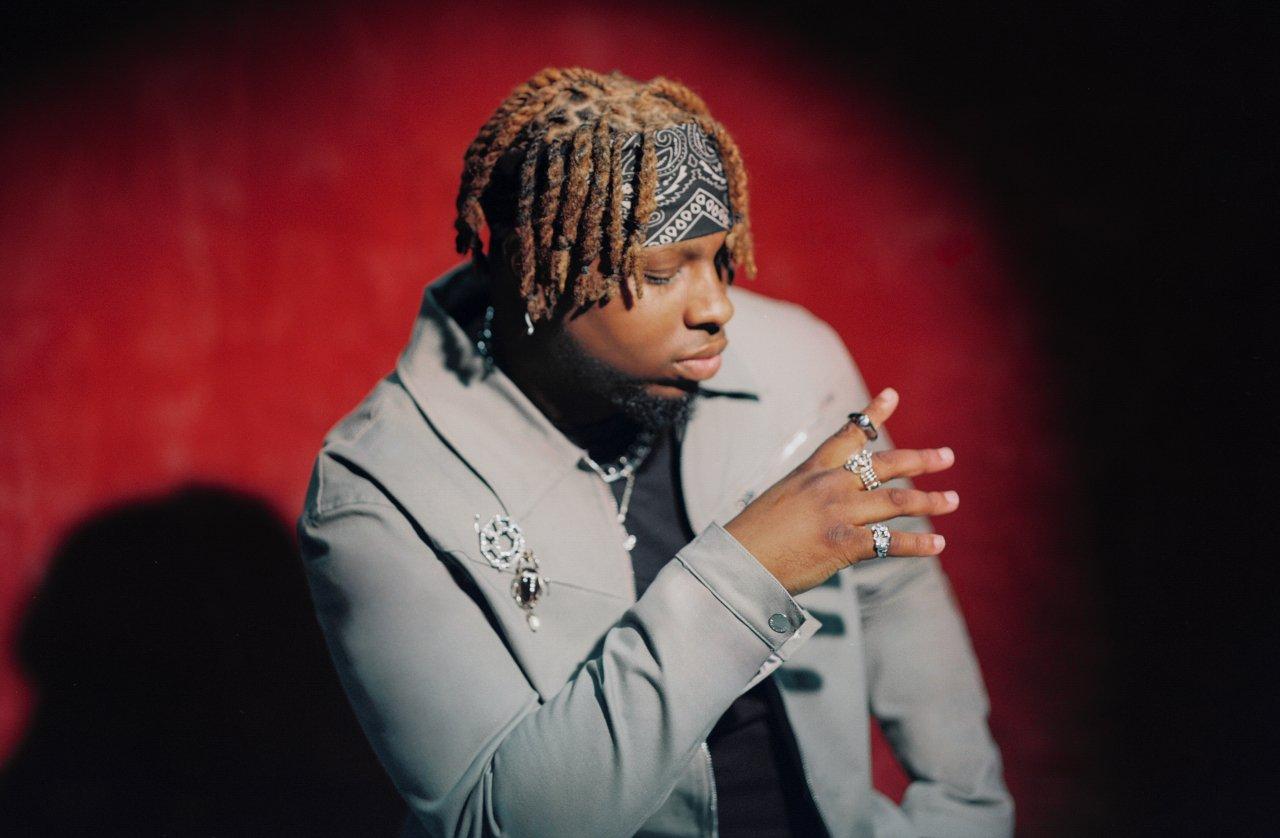
interview
BLK ODYSSY Becomes A Human Instrument On '1-800 FANTASY'
Juwan Elcock — the mastermind behind the genre-bending band BLK ODYSSY — threw himself into creating his new album like a method actor. His goal was to make its character both believable and liberating.
Get a load of "Last Resort," the final song on BLK ODYSSY's new album, 1-800 FANTASY, and one where he goes for broke. Therein, frontman Juwan Elcock toggles between a mind-bending array of genres — it's like moody alt-rock meets rubbery R&B meets vistas of negative space.
As it gains steam, he stutters, pants and screams. He meant the thudding kick drum to evoke a heartbeat; its guitar part, racing thoughts. "It's a climax to the album, and to the storyline," Elcock explains to GRAMMY.com. "This album was almost about method acting, really, because all of our records have a particular storyline and theme.
"I had to embody that character early in the recording process in order to really nail the tracks and make it feel believable," he continues. "Also, so that I believed it."
In his command of numberless genres, including hip-hop, jazz, and rock 'n' soul, as well as his tendency to go there emotionally, Elcock renders himself a human instrument. His namesake band fleshes out and breathes life into the arrangements — but as that "method actor," he's the locus.
1-800 FANTASY drops July 19; below, read on for a full interview with Elcock about how he crafted it, and much more.
This interview has been edited for clarity.
I was watching your Tiny Desk concert and loving it. What can you tell me about this band?
Oh, thank you, man. Those dudes are people that I've been working with for a long time. Alejandro [Rios] on guitar has been kind of with BLK ODYSSY since the conception of the project. I brought some ideas to him and he played live guitar over it, and from there he became the guitar player in BLK ODYSSY.
The rest of the crew just consisted of people that I always collaborate with on records. So you had Art [Hays] on saxophone, who played flute and sax on [2023's] Diamonds & Freaks — and also this new one that we're dropping, 1-800 FANTASY. We've kind of just collaborated for years.
The flute player on the Tiny Desk I had just met a couple of days before we had shot that and he hopped right in. The drummer was a part of a band called Medicine Man Revival that was based in Fort Worth, Texas, that I saw when I first moved to Austin in 2017. He was part of the initial inspiration I had to really start a group.
So, years later, he ended up being in BLK ODYSSY's live lineup. So it is cool to have Marcus. And Jimmy [Blazer], the bass player, I've also been working with for many years. These are the people I just have brought together over the years, living in Texas.
Background vocalist Maya Sampleton — who's also another local collaborator — is a lot more on this record than she was on the previous. Andre Taylor, who was on [2021's] BLK VINTAGE and Diamonds & Freaks a ton. Incredible vocalist, obviously as you saw on Tiny Desk.
And then my sister LARA, who is one of my artists that we just signed to Empire Records — she also is a very heavy collaborator on all the BLK stuff since we started. So yeah, that was kind of like our world for Tiny Desk.
Is there a big overlap with the band on 1-800 FANTASY?
Well, the way that we created this upcoming record was a bit different, but there still definitely is a lot of the same collaborators and writers, especially on the writing side.
Instrumentation-wise, we really did dive into a completely new world kind of exploring the alt-rock and the alt-pop kind of stuff, and even what I would consider post-punk at some points. I think where that will really shine is when we go on tour in September and show the live rendition of how all of this comes together.
Where do the alt-rock and alt-pop influences stem from? I'm sure you have a command of the canon; you can mix and match styles at will.
At the end of the day, I listen to a lot of stuff. When I was in high school I primarily only listened to hip-hop and R&B, which is what was around me.
When I moved to Austin I found myself just listening to the local radio stations a lot more. And there was a particular station, KUTX, that I always tuned into, which was my first introduction to stuff outside of my world. And that's where I discovered bands like Cage the Elephant, Mumford and Sons, the Lumineers, and a bunch of other stuff.
I had just met Alejandro at the time who kind of started introducing me to stuff like Radiohead, Rage Against the Machine, Led Zeppelin, and a bunch of other things that were kind of a musical awakening for me.
So, as a producer, and as a writer, as a composer, once those sorts of sounds got into my brainwaves, I learned that I liked it just as much as the other stuff that I grew up on. And at a very early stage in BLK ODYSSY, I started finding a way to meld those two worlds and bring them together.
Give me a tune that really reflects that for you.
"XXX," which is the single we just released with Wiz Khalifa. That one has a foot in this post-punkish vibe, but touches on this alt-rock sound as well.
The way that I flow is still very true to the BLK ODYSSY sound, but the instrumentation is completely different. So it's almost like if blink-182 and Outkast had a baby, or if Hayley Williams and I don't know, Pharrell got together. So, it's a mesh of two worlds.
Is there any methodology you apply to find the common DNA between those styles? Or is it a completely organic, non-intellectual process?
I think the rhythm is the main thing. The way that I do vocals and write over rhythm is pretty consistent, doesn't matter the genre.
So, you have examples: Shaboozey was doing this whole country thing, but [his work] still has this element of hip-hop to it, and the instrumentation just makes for a very unique sound. So we're sort of doing the same thing. We happen to be on the same label, so I am excited.
When it comes to the beats, I find a way to just do my own thing over it and then build the instrumentation around it so it's not forced.
It's just like if you heard one of your favorite rappers over a remix of one of your favorite punk songs, if the world's meshed together the right way, it is going to feel good. And that was our main thing in the studio. We wanted to just make sure it felt good.
We knew that it was going to be sort of a culture shock within our fan base, and we would face some sort of backlash internally because of it. But even in that, I feel like most of our fans have really gotten on board with this — and the name is ODYSSY for a reason. We never wanted to be pigeonholed into one genre.
So, this is just an aggressive left turn for us, and to kind of let our fans know that we're not necessarily going to be in this world even. We're going to do something completely different on the next record.
Tell me more about that sense of culture shock. That's interesting.
I just think that we have a very interesting culture within our fan base. And on one hand I appreciate it, but on the other hand,it's not really a sustainable thing if we want to grow at the level that we aspire to grow at.
BLK ODYSSY, when we came out, was such a potent and specific, niche sound; the melding of jazz and hip hop and cinematic was interesting for our fans to hear.
But I feel like it was one of those scenarios where our fan would be at a bar and they would be like, do you know BLK ODYSSY? And if the person didn't know them, they would be like, oh yeah, you probably wouldn't listen to that kind of stuff. And then if you did know BLK ODYSSY, they would be like, oh, I automatically know that I could relate to you as a person and that we're on the same wavelength.
On one hand that's great because we created this community of people that really mesh with each other and really appreciate each other's brains. But at the same time, it also created this almost music-snobbish thing that I noticed.
We wanted to find a sound that was more "digestible;" something that just had a wider range. I didn't feel like we had to do away with any of our tendencies in the studio or compromise anything.
I was excited to work on this record because…I don't want to be the old musician that's like, oh, I only do jazz. I only do neo soul, and I don't want to conform to whatever is popular.
But I found it liberating to make this record because I felt that this was something new for me as a vocalist, a storyteller, definitely as a producer, and as a collaborator as well. And I was able to grow on that level because of this record.
GRAMMY News, Performances & Highlights
2025 GRAMMYs To Take Place Sunday, Feb. 2, Live In Los Angeles; GRAMMY Awards Nominations To Be Announced Friday, Nov. 8, 2024
GRAMMY Awards Updates For The 2025 GRAMMYs: Here's Everything You Need To Know About GRAMMY Awards Categories Changes & Eligibility Guidelines
2024 GRAMMYs: See The Full Winners & Nominees List
10 Must-See Moments From The 2024 GRAMMYs: Taylor Swift Makes History, Billy Joel & Tracy Chapman Return, Boygenius Manifest Childhood Dreams
Watch All The Performances From The 2024 GRAMMYs: Tracy Chapman & Luke Combs, Billie Eilish, Olivia Rodrigo & More
2024 GRAMMYs: Miley Cyrus Celebrates "Flowers" GRAMMY Win With Jubilant Performance
2024 GRAMMYs: Dua Lipa Debuts "Training Season" & Slays "Houdini" In Mesmerizing Opening Performance
2024 GRAMMYs: Taylor Swift Makes GRAMMY History With Fourth Album Of The Year Win For 'Midnights'
2024 GRAMMYs: Billie Eilish Performs An Ethereal Rendition Of "What Was I Made For?"
2024 GRAMMYs: Watch Olivia Rodrigo Bleed Her Soul Dry With Dramatic "Vampire" Performance
SZA Wakes Up The 2024 GRAMMYs With A Performance Of "Snooze" & "Kill Bill"
2024 GRAMMYs: Luke Combs & Tracy Chapman Team Up For A Surprise Duet Version Of "Fast Car"
2024 GRAMMYs: Burna Boy's Fantastic Afro-Fusion Lights Up The Stage
2024 GRAMMYs: Travis Scott Turns Music's Biggest Night Into A Heated Utopia
2024 GRAMMYs: Watch Joni Mitchell Deliver Heartwarming Performance Of "Both Sides Now" In Her GRAMMY Stage Debut
U2 Performs "Atomic City" & Transports The 2024 GRAMMYs To Las Vegas
2024 GRAMMYs In Memoriam: Stevie Wonder, Lenny Kravitz & More Pay Tribute To Late Icons
2024 GRAMMYs: Billie Eilish Wins GRAMMY For Song Of The Year For "What Was I Made For?" From The 'Barbie' Soundtrack
2024 GRAMMYs: Miley Cyrus Wins The GRAMMY For Record Of The Year for "Flowers"
2024 GRAMMYs: Victoria Monét Wins The GRAMMY For Best New Artist
2024 GRAMMYs: Jack Antonoff Wins GRAMMY For Producer Of The Year, Non-Classical For The Third Year In A Row

Theron Thomas Wins Songwriter Of The Year, Non-Classical | 2024 GRAMMYs Acceptance Speech

Watch Taylor Swift Walk The 2024 GRAMMYs Red Carpet
2024 GRAMMYs: Jay-Z Receives Dr. Dre Global Impact Award
Relive The 2024 GRAMMYs Red Carpet: Interviews With Dua Lipa, Ice Spice & More
10 Acceptance Speeches That Made Us Laugh, Cry, & Smile At The 2024 GRAMMYs
Big First Wins At The 2024 GRAMMYs: Karol G, Lainey Wilson, Victoria Monét & More
13 Moments From The 2024 GRAMMYs You Might Have Missed
2024 GRAMMYs Red Carpet Fashion Highlights: Taylor Swift, Dua Lipa, Billie Eilish, Olivia Rodrigo, boygenius & More
9 Ways Women Dominated The 2024 GRAMMYs
Overheard Backstage At The 2024 GRAMMYs: What Jack Antonoff, Laufey & Other GRAMMY Winners Said
How The 2024 GRAMMYs Saw The Return Of Music Heroes & Birthed New Icons
Taylor Swift Announces New Album After 13th GRAMMY Win At The 2024 GRAMMYs
2024 GRAMMYs: Miley Cyrus Wins First-Ever GRAMMY For "Flowers"

Billie Eilish Wins Best Song Written For Visual Media For "What Was I Made For?" (From 'Barbie The Album') | 2024 GRAMMYs Acceptance Speech
2024 GRAMMYs: Karol G Wins The First GRAMMY Award Of Her Career For Best Música Urbana Album

Watch Ice Spice’s 2024 GRAMMYs Red Carpet Interview

boygenius Celebrate Their Three GRAMMY Wins At The CNB "First Look" Cam At The 2024 GRAMMYs Premiere Ceremony
In Memoriam (2023): The Recording Academy Remembers The Music People We Lost

Killer Mike Wins Best Rap Album For 'MICHAEL' | 2024 GRAMMYs Acceptance Speech
2024 GRAMMYs: Tyla Wins First-Ever GRAMMY Award For Best African Music Performance

Watch Billie Eilish & FINNEAS’ 2024 GRAMMYs Red Carpet Interview

Boygenius Wins Best Rock Song For "Not Strong Enough" | 2024 GRAMMYs Acceptance Speech
Burna Boy, Tyla And Africa's Moment At The 2024 GRAMMYs
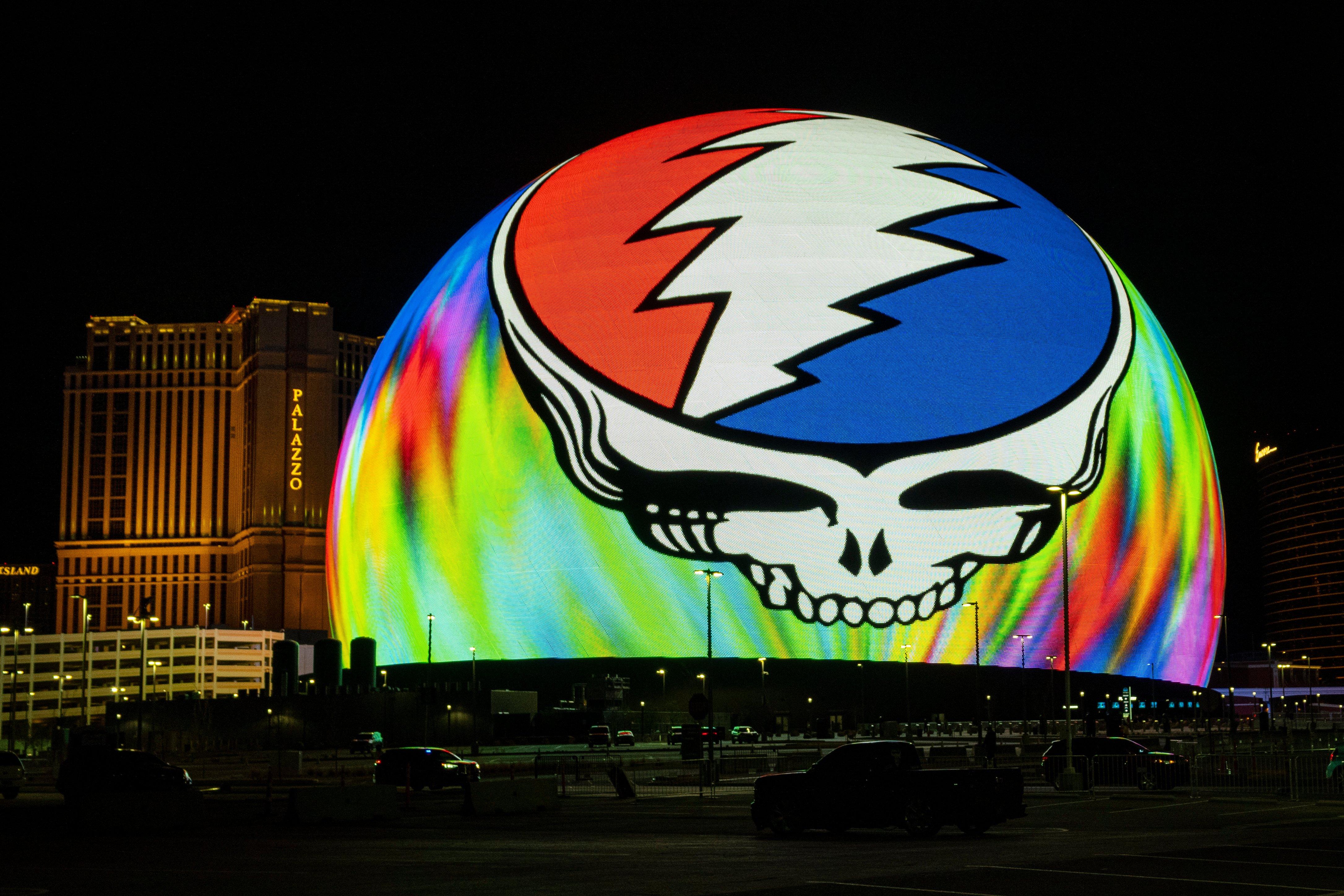
Photo: Kevin Carter
list
Why Dead & Company's Sphere Residency Is The Ultimate Trip
The 30-date Las Vegas residency is an unprecedented look at Dead & Co's live artistry. With stunning visuals and immersive technology, the Dead Forever residency takes attendees on an unpredictable, eye-popping vortex journey.
The scene on Saturday, July 13, was one mostly familiar to Dead & Company fans: Usual suspects Jeff Chimenti on keys, Oteil Burbridge on bass, Mickey Hart on drums, and John Mayer on guitar, a Silver Sky in hand. Grateful Dead co-founder Bob Weir dutifully approached the microphone to deliver one of the Dead’s best-known opening lyrics: "You tell me this town ain’t got no heart."
Throughout the evening, appreciative cheers and whistles sounded at the first notes of a classic, like this one, intermingling with the hints of marijuana in the air. The crowd of thousands, who’d traveled from both near and far for the occasion, swayed to the music. Largely clad in the tie-dye t-shirts customary to the Dead fandom, they comprised a vivid sea of color, visible even in the venue’s dimmest lighting.
Bathed in the glow of a key anomaly — a 160,000-square-foot curved LED canvas — a Deadhead sitting in the row ahead of me turns around and asks if I’m enjoying the show (I am). When I return the question, he is emphatic, his response succinct: "it’s transformative."
He’s not wrong in that the audiovisual spectacle — which wrapped its eighth of 10 weeks this past weekend — metamorphoses Dead & Company’s concert format. Since it debuted in May, the now 30-date Las Vegas residency, dubbed Dead Forever, has attracted old-school and new-generation Deadheads, as well as curious first-timers. From one-of-a-kind production tools, like its 16K LED display (the highest-resolution display in the world, per developers) and stereographic projection, Sphere has empowered Dead & Company to carry forth the legacy of one of the most fervently-loved bands in American music history, with unprecedented storytelling capacities and complete creative control.
Read on for four reasons why Dead & Company’s residency at Las Vegas’ most-talked-about venue is the rock outfit like they’ve never been seen before.
The Meeting Of Music & Visuals Allows For True Narration
For the nearly four hours that Dead & Company play each Thursday, Friday, and Saturday of a residency week, the domed venue adjacent to the Venetian transforms from Sphere to spaceship. Narratively, the show is stylized as a long, strange trip through space that issues nods to the Grateful Dead’s history.
It’s only fitting that this story begins in San Francisco, where the Dead’s townhouse in the heart of the Haight-Ashbury district becomes the focal point of the audiovisual journey’s intro. The 360-degree view of the Dead’s residence and the larger row of townhouses to which it belongs pans to a drone shot of the Bay Area at golden hour and soon thereafter, outer space.
Visually, attendees travel through time and space in an unpredictable, eye-popping vortex of fantasticality (and sometimes, reality). Take, for example, the segment that recreates the Dead’s performance at the Great Pyramid in Giza, Egypt. The scene is punctuated by black bats that flap swiftly through the desert landscape — a detail that comes as a surprise to those in the audience, and one ultimately added based on Weir’s recollection of this very phenomenon during the 1978 event, Mayer tells GQ.
Before Dead & Company bring Dead Forever full-circle by returning to 710 Ashbury Street at the show’s close, the show winds through a colorful, circuitous run of visuals: the Dead’s iconic technicolor dancing bears, Cornell University’s Barton Hall, and a wall made entirely of digital reproductions of Dead event posters and hard tickets. The show’s depth of reference is plunging, and Sphere’s technology allows the story to play like an abstract movie that blurs timelines, affording Dead & Company an unusual and nonpareil opportunity to leverage live storytelling in a way they’ve never before been able to.
While Dead Forever is accessible purely as a visual marvel, for the initiated, it is rife with Easter eggs. Its historical allusions are familiar touch points for the Deadheads who hopped on the metaphorical bandwagon back when Jerry Garcia was at its helm. Although some of its segments will evade those less fluent in the Dead’s storied past, they can nevertheless serve as educational gateways to it (and to greater, deeper fandom) for those who leave the show wanting to learn more.
Read more: A Beginner’s Guide To The Grateful Dead: 5 Ways To Get Into The Legendary Jam Band
In A Way, Everything Is New
Whether one has seen Dead & Company once, five times, 20 times, or never before matters not, for Dead Forever is a brand-new show. Familiarity with the Grateful Dead’s legacy and its contemporary offshoot's genesis certainly enriches the overall experience, but it’s not a requisite to enjoy the show, making the residency a particularly good entry point for the Dead & Company-curious who may have missed them on The Final Tour in 2023.
Dead Forever levels the playing field for attendees in that, apart from the songs on the setlist, the residency represents net-new material. The marriage of music and visuals makes each of the 18 tunes new from the standpoint of an audiovisual experience, and the novelty of Dead Forever deepens for even the most experienced Deadhead.
"When I was growing up, ‘Drums’ was always my bathroom song, but now you don’t want to miss it," an attendee tells GRAMMY.com at the end of the first set (Dead & Company play one six- or seven-song set and take a 30-minute intermission before beginning the evening’s second and final set).
A customary part of the Dead’s sets, "Drums/Space" is an extended percussion segment that takes on new life in Dead Forever. Led by Mickey Hart, the set two standout is where sound evolves into physical feeling. As this portion of the show starts, the curved LED canvas swirls with images of different drums that move wildly as Hart and Jay Lane (who stands in for Grateful Dead co-founding member, Bill Kreutzmann) diligently drum, steadily increasing the pace and intensity with which they do so. The instruments that grace Sphere’s screen are Hart’s own, the drummer tells Variety. Following 3D-photographing that enables them to be displayed in this fashion, an ensemble of at least 10 different drums joins the visual jamboree.
The cinematic, multisensory nature of this segment grows increasingly climactic, with the percussion becoming so thunderous it becomes physical. No surprise, considering Sphere’s immersive, crystal-clear sound system, or the fact that 10,000 of the venue’s 17,385 seats are haptic seats that can vibrate in time with the mounting percussion. This technology transforms "Drums/Space" and allows a customary piece of the Dead’s traditional sets to be heard, seen, and felt anew.
The Environment Is Unusually Immersive —And Intimate
Upon mention of Sphere’s size — the globe measures 875,000 square feet and can accommodate up to 20,000 people — "intimate" is not the first word to come to mind. Still, the venue felt remarkably intimate during Dead & Company’s final performance of July.
This was owed in equal parts to its self-contained design and its immersive visual environment, in which Sphere’s LED screen wraps over and behind the audience. However uncannily, the latter contributes to a sense of closeness, creating the illusion that Sphere, its visual displays, and its audience are situated much more closely than they actually are.
Its 580,000-square-feet of LEDs, coupled with its 360-degree shape and structure, render Sphere the most immersive live music venue in the world. To that end, it’s not hyperbolic or unreasonable to call Dead Forever Dead & Company’s most immersive live venture yet.
Of course, the Dead Forever narrative — a trip through space undertaken together, as one community — only adds to the show’s combined sense of intimacy and immersion.
No Show Is The Same
It’s not out of character for Dead & Company to play no repeats across consecutive evenings (as they did at San Francisco’s Oracle Park, where they laid their touring career to rest last July), and Dead Forever is no exception. Apart from "Drums/Space" — the sole item on the setlist that recurs each night — the 17 other songs that the band will play and their visual accompaniments are left to Dead & Company’s whim.
"What’s become really interesting — and I would say it’s a challenge, but it’s a really fun one — is that not only do you have to make the songs work in some kind of a flow for the setlist, but every piece of content has maybe eight or 10 songs that can go with it," Mayer told Variety.
No show is the same, yielding similar but unique viewing experiences across a given residency weekend and, more broadly, the portfolio of Dead Forever shows performed to date. This aspect has enticed avid fans to return not once, not twice, but three times in a given weekend, to see a fuller scope of what Dead Forever has to offer across its many possible variations.
With the residency’s July run now in the rearview, Dead & Company will take a brief break before returning to Sphere Aug. 1-3 and 8-10 for the final Dead Forever trips — for now.
Explore The World Of Rock
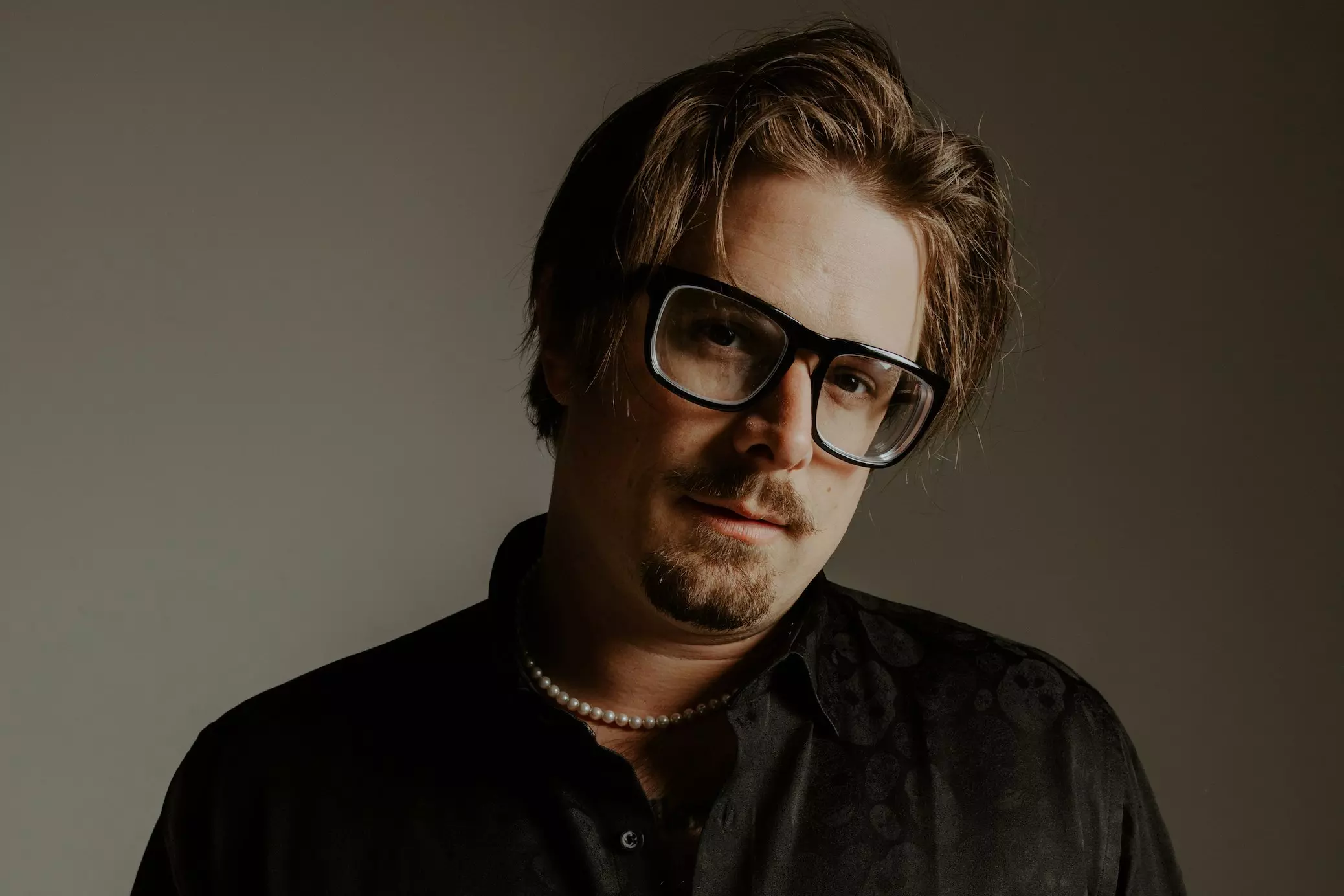
HARDY On New Album 'Quit!!' & How "Trying To Push My Own Boundaries" Has Paid Off
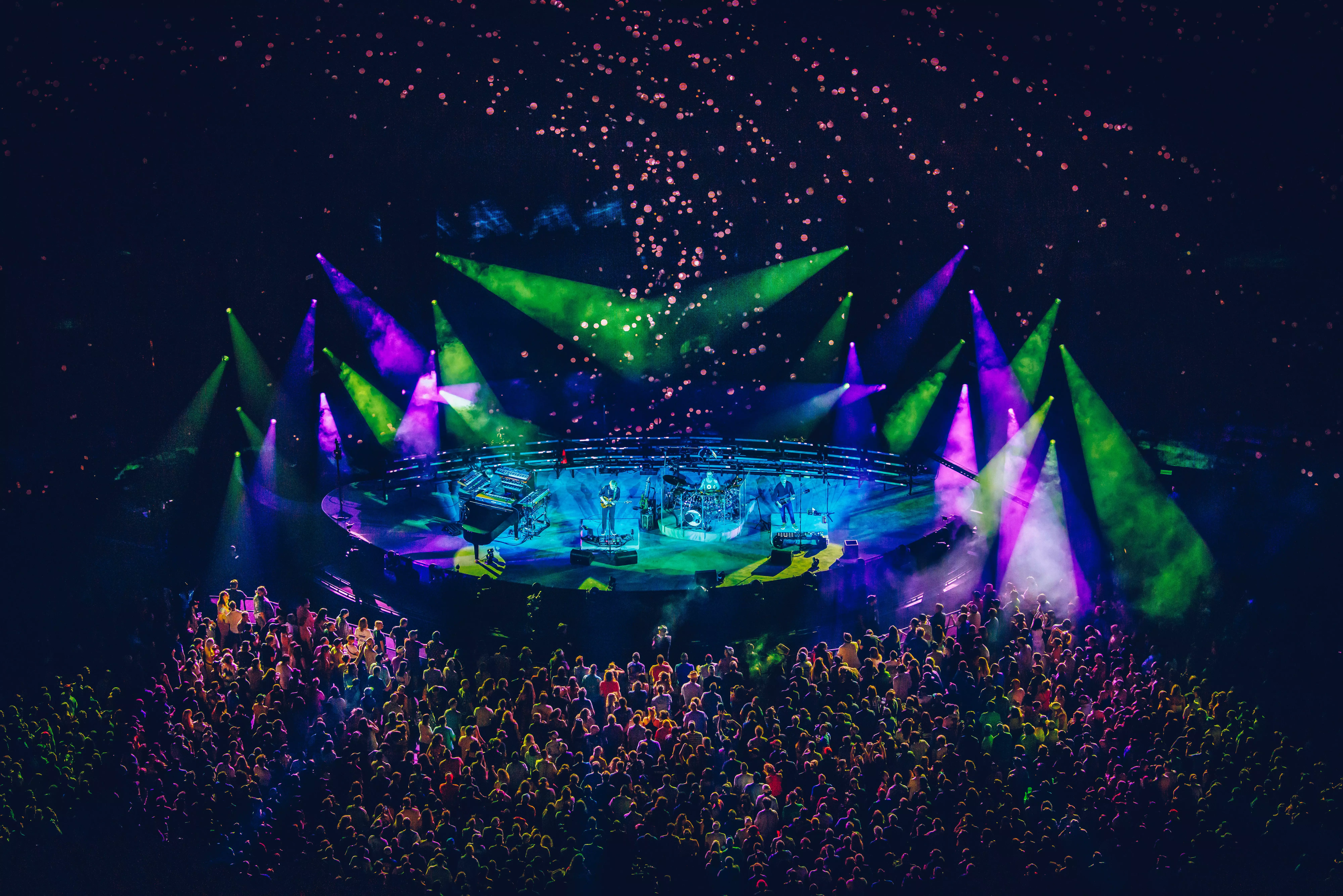
A Beginner’s Guide To Phish: 8 Ways To Get Into The Popular Jam Band
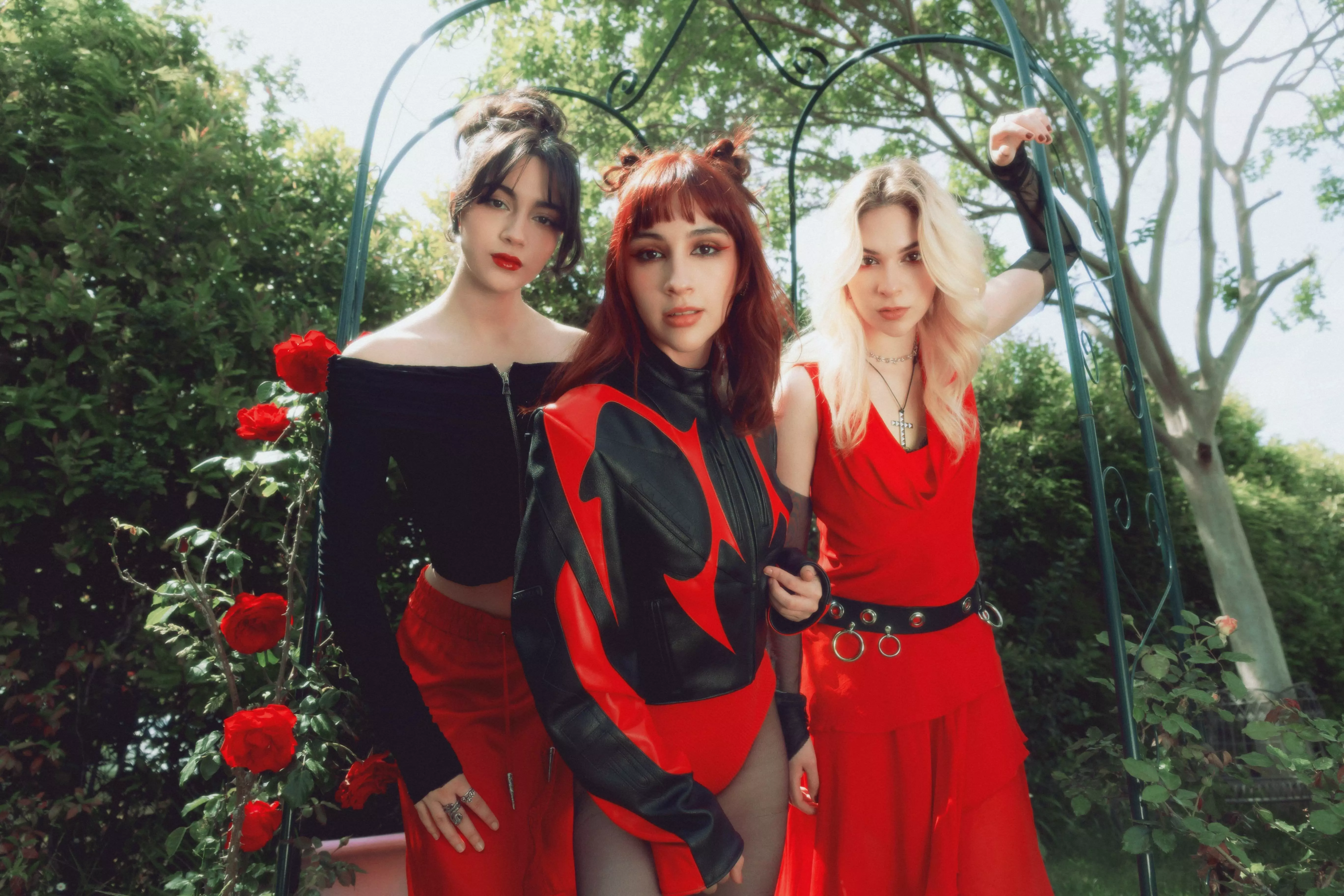
Mexican Rockers The Warning On 'Keep Me Fed' & "The Possibility That We Could Literally Do Everything"

Watch Red Hot Chili Peppers Win Best Rock Album
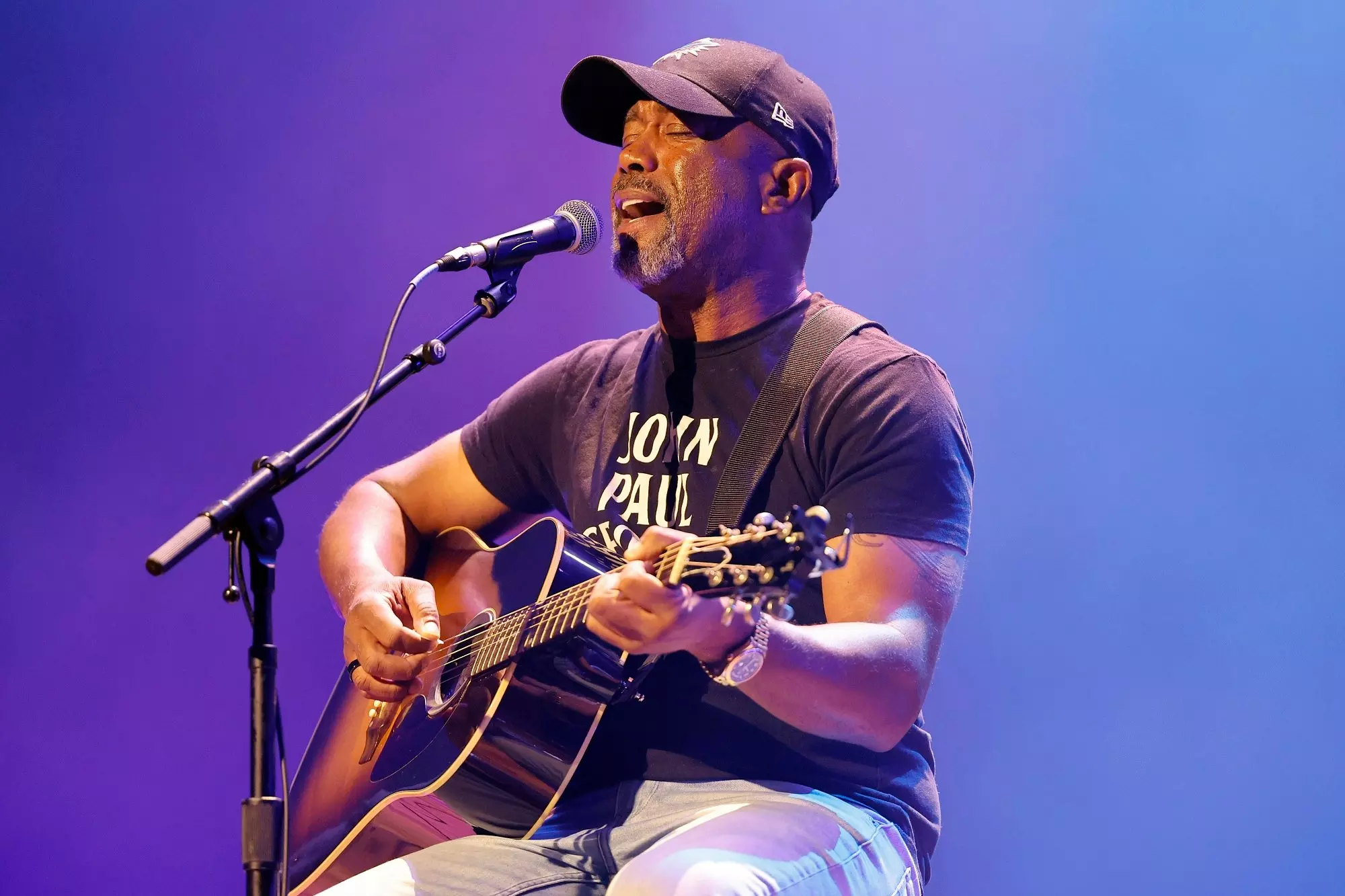
Darius Rucker Shares Stories Behind 'Cracked Rear View' Hits & Why He's Still Reveling In "A Dream Come True"
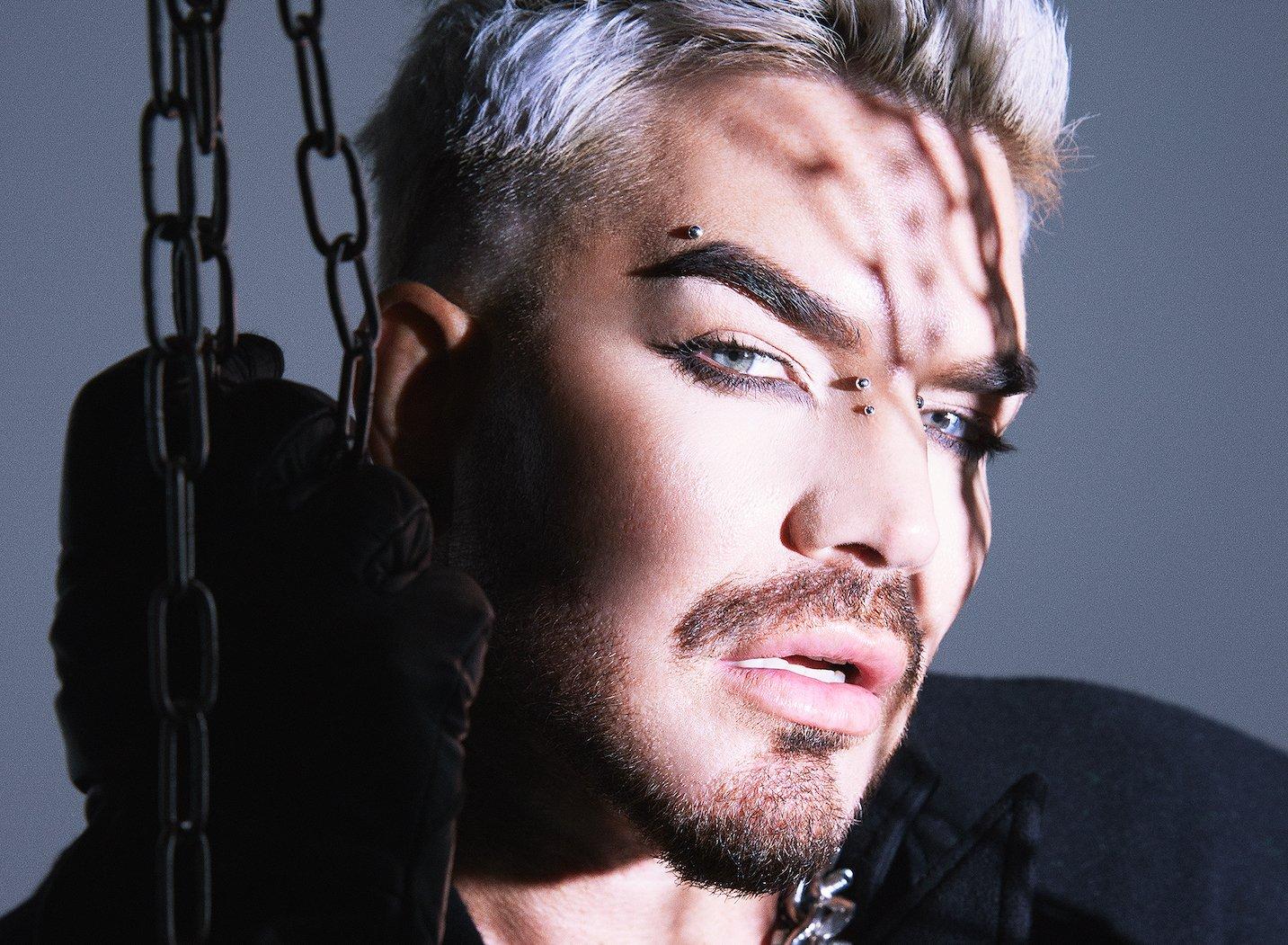
Photo: Brian Ziff
interview
Inside Adam Lambert's 'Afters': How '90s House, Clubbing & Lots Of Sex Inspired His Most "Liberated" Music Yet
With his latest project, Adam Lambert leans into his sexuality and queer nightlife culture like never before. The singer details the uninhibited inspirations behind songs like "WET DREAM" and "LUBE."
Fifteen years into his career, Adam Lambert is primed for the after-party. In fact, the pop star has made an entire EP for the occasion — fittingly titled Afters.
The six-track project, which drops July 19 via More Is More Records, finds the big-voiced singer trading the expansive covers of his last LP, 2023's High Drama, for a no-holds-barred romp that takes listeners from the club to the after-party to the bedroom and beyond.
"It's my love letter to our nightlife culture," Lambert tells GRAMMY.com on a phone call from New York City. And though he admits to recording the bulk of Afters in L.A., the project is imbued with the club kid spirit of New York's queer community — from the primal sexuality dripping off dual lead singles "LUBE" and "WET DREAM" to the strutting, ballroom-ready kiss-off (and nearly NSFW title) of follow-up track "CVNTY."
Ahead of the EP's release, the queer GRAMMY nominee (and frequent Queen collaborator) celebrated his new musical chapter with a special party at The Standard High Line's nightclub Le Bain. Organized by legendary NYC nightlife impresario Susanne Bartsch as part of her famous On Top! event series, the soiree felt like a full-circle moment for Lambert as he watched drag artists like God Complex and ShowPonii slay the house down boots to his new music.
"I've always really been drawn to that kind of world," Lambert says of the thriving LGBTQIA+ party scene. "I think even way back before '[American] Idol,' I remember being in L.A., when I was in my early twenties and trying to find the parties. They were pretty underground at the time, where people would dress up and wear crazy makeup. And of course, I was there in my platform boots, stompin' in. So I've always sort of sought out that community. I love it."
Below, Lambert takes GRAMMY.com through the colorful and unapologetically queer inspirations that led to Afters, from the '90s house sounds of Crystal Waters to finding freedom in radical creative expression — and, of course, plenty of sex.
Feeling Free — And Sexy
I've always loved electronic dance music, I've always loved house. And it's interesting because, for a long time, it was considered sort of "niche" for a gay person to make dance music. And now it just feels like it makes sense. [Laughs.] It's so obvious, you know?
I was working so hard for so long and on tour for so long, and I did a lot of tours with Queen and on my own stuff. I was so focused on my career for so many years, and then as the pandemic kind of faded and we were getting into that next chapter, I made some time for a social life. Which was much needed. That's what kind of inspired me to want to make this music.
I just wanted to make something that felt like my actual social life — that felt like my life. I'm in a relationship, we've made lots of friends in L.A., we have lots of after-parties. We socialize, we go out, we go to clubs, we go to bars. I wanted to make music for that.
My private life is...exciting is how I would probably put it, and passionate. So it's definitely fueled from that. The music is written in first person, but it's also sort of meant to inspire the listener to want to feel that type of freedom as well. You listen to something about sex and hopefully it makes you go, "Yeah! I feel sexy!"
Overcoming Post-'American Idol' PTSD
When I first came out the gate after Idol, I did a big old performance [at the 2009 American Music Awards]. I got in trouble for kissing the guy and having sexy dance moves and stuff, and that gave me a little dash of almost a PTSD of, like, "Oh, OK, there's a line that I can't cross. And if I do, I could risk losing everything." And that fear drove me down a certain path where I felt like I had to hold back a certain amount.
That was very much a reflection of where we were at as a society at the time, and what the mainstream was able to digest. The music industry was a different game back then. There were a lot more gatekeepers, a lot more obstacles that I encountered. Now, the industry has shifted so much, just in terms of how people get music, how you can reach your listener, how you can make music, what kind of label situation you have set up. There's a lot less filtering going on. That's what also inspired me to want to make something that was more liberated.
My perspective has shifted a lot. That fear early on came from a place of, "I don't want to lose this opportunity." There was a little dash of imposter syndrome in there. You know, coming off of "Idol," feeling like, "Oh my god, how did I get here?" It happened so fast. And I think just having stayed in the game over the last 14 years has given me a sense of confidence. It's given me a sense of belonging.
I've found more of who exactly I am over that time. Working with Queen has been a real boost in confidence as well, and has allowed me to sort of feel like I've earned something.
Setting The Mood
I love music that puts you in a mood, in a headspace. And that's what I wanted Afters to be. That's why I called it Afters. It was, yes, you could totally listen to these at a club, but it's also, like, lyrically, when you go to a club and then you go to an afterparty, the rules are out the window. You can do whatever you want, you know? And people feel that freedom.
There's something to be said about growing up a bit and maturing as a performer. You feel less of a need to prove something [vocally]. I think I'm finding less of an impulse to be, like, "Look what I can do!" and more, "Look what I can make you feel." The "less is more" thing does start to become more obvious.
As I've gotten a little older, too, my voice has shifted a bit. And I have, like, lower parts of my voice that I haven't really dug into before that I definitely did on this project. Which is kind of a fun experiment. I just wanted to do something that was more vibey.
'90s House & '20s Hyperpop
I like going into a project with, like, a reference and a direction. It gives you sort of a roadmap…I have a whole playlist of newer stuff that I kept adding. A lot of it's somewhat obscure, but then there's artists out there that I think are really cool, like Slayyyter [or] COBRAH. A lot of the DJs that I really like — Chris Lake is amazing. Even stuff like Disclosure… I really love them. I just wanted to make music that made me move.
I found myself gravitating towards a similar sound over and over again — sort of a dirty house, kind of sexy tech-house sound. Certain textures and sonics that I started noticing as a pattern of the stuff that I liked.
I love a good, soulful house vocal, always…Like Crystal Waters or any of those. I love that, like, '90s house vibe. And obviously "DEEP HOUSE" [on Afters] has a little bit of that. So does "WET DREAM," where you get into that soulful pocket. It's so fun to sing from that place.
Queer Voices In The Studio
It was really important for me to make sure there were queer people in the room when I was writing these songs. Back when I was first starting, the major label writing setups that I was put into, there weren't many queer people. And that's changed so much — there's more and more queer people in the music space. Definitely top-line songwriters, and then even more and more, I'm finding producers that identify as queer, and that's really exciting. 'Cause it makes everybody less afraid and just willing to sort of go for it.
"WET DREAM," I did with Sarah Hudson and JHART and Ferras, who I've known for ages. Vincint and Parson James worked with me on "LUBE." Just people that I really admire. Vincint did some background vocals on "LUBE," actually, which is cute. Vincint and I did a collab on his project recently as well, so that was cool that we got to each kind of add to each other's project.
A lot of the songwriters are friends of mine who I've known for a long time. I was like, "Do you want to do a song?" Which makes the writing process so much fun.
Queer Rebellion & Sexual Healing
I think, right now, people want to find freedom. I think people want to find an escape. There is a lot of sociopolitical energy right now that's kind of dark and negative, that's coming at us from the right wing, super-conservative side of the world. Some of that can make us feel dark as well, and kind of discouraged.
But I also think there's a lot of us, including myself, that feel like that lights a bit of a rebellious flame in us, and makes us want to shine brighter and be bolder and be wilder and crazier than we are. And [I] see that out and about: people are more and more expressive, emotionally, with their identity [and] how they want to explore [it].
There are members of our community that want to explore their gender identity; there are members of our community that want to explore their feminine side or their masculine side. There's, I think, more acceptance in that exploration and that expression right now than there's ever been. It's f—ing great. It's always been there in the [LGBTQIA+] community, but you're just seeing it on display a little bit more. People are more comfortable going there and exploring it, and I love that.
There's less and less shame around sex than there's ever been. We're more mainstream than we've ever been — there's more with social media and [pauses] other types of media on the internet. And that's really exciting. 'Cause sex is f—ing great. And healing, and wonderful, and exciting. It's our human right to explore our sexuality, and I see more people feeling freer in that.
Finishing With A Climax
One of the Afters songs, "FACE," was actually created a while ago. I wrote that with Pete Nappi, like…four-ish years ago? During the pandemic, I think. But it sounded very different. And once I started getting more house tunes together, I kinda was like, "OK, can we take this idea and evolve it into a higher BPM and a dancier kind of direction?"
We sped it up, we added a bigger beat to it, more of a four-on-the-floor feel to make it feel "club." But it's definitely the last track on the EP for a reason. 'Cause it slows down compared to the other songs a bit. If the rest of the EP is foreplay, it's sort of like the home run. [Laughs.] It's like once you get that person that you've been into all night into the bed, what happens?
Latest News & Exclusive Videos
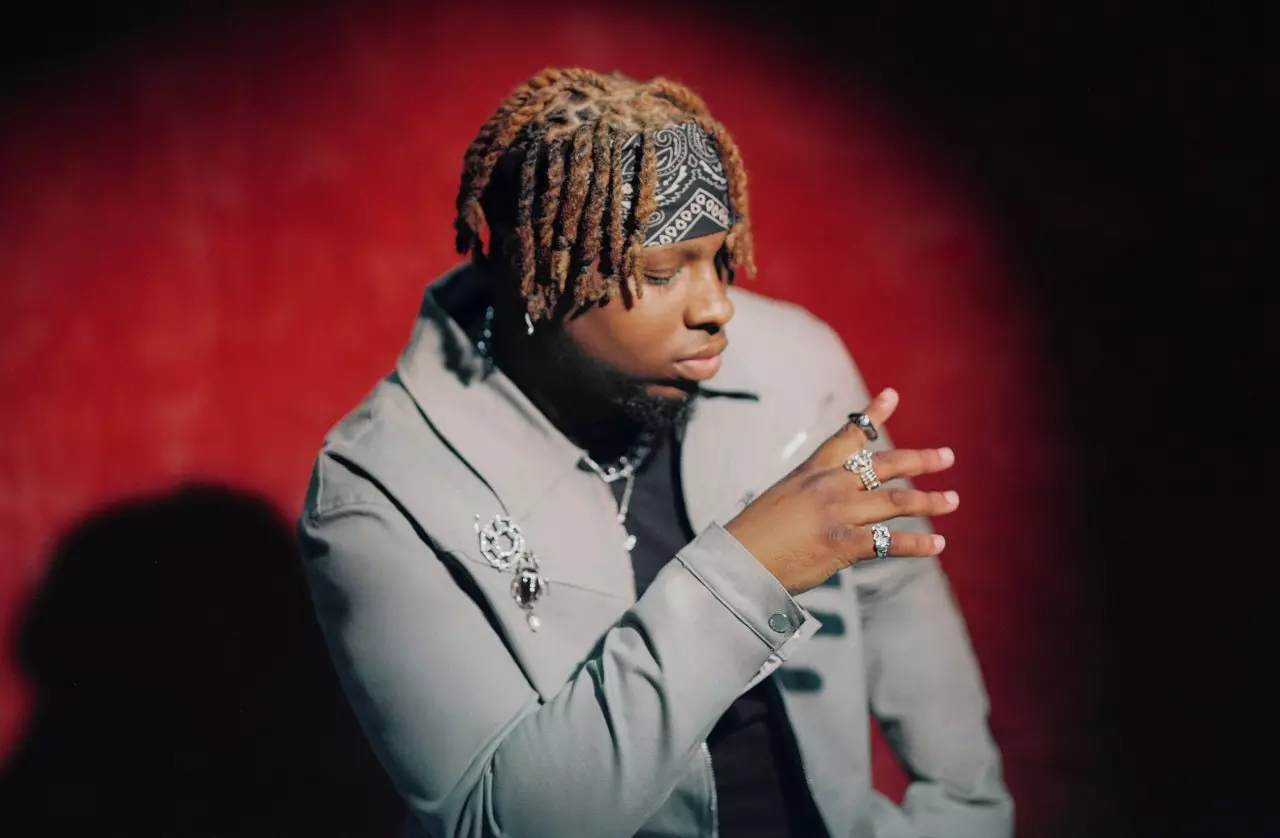
BLK ODYSSY Becomes A Human Instrument On '1-800 FANTASY'
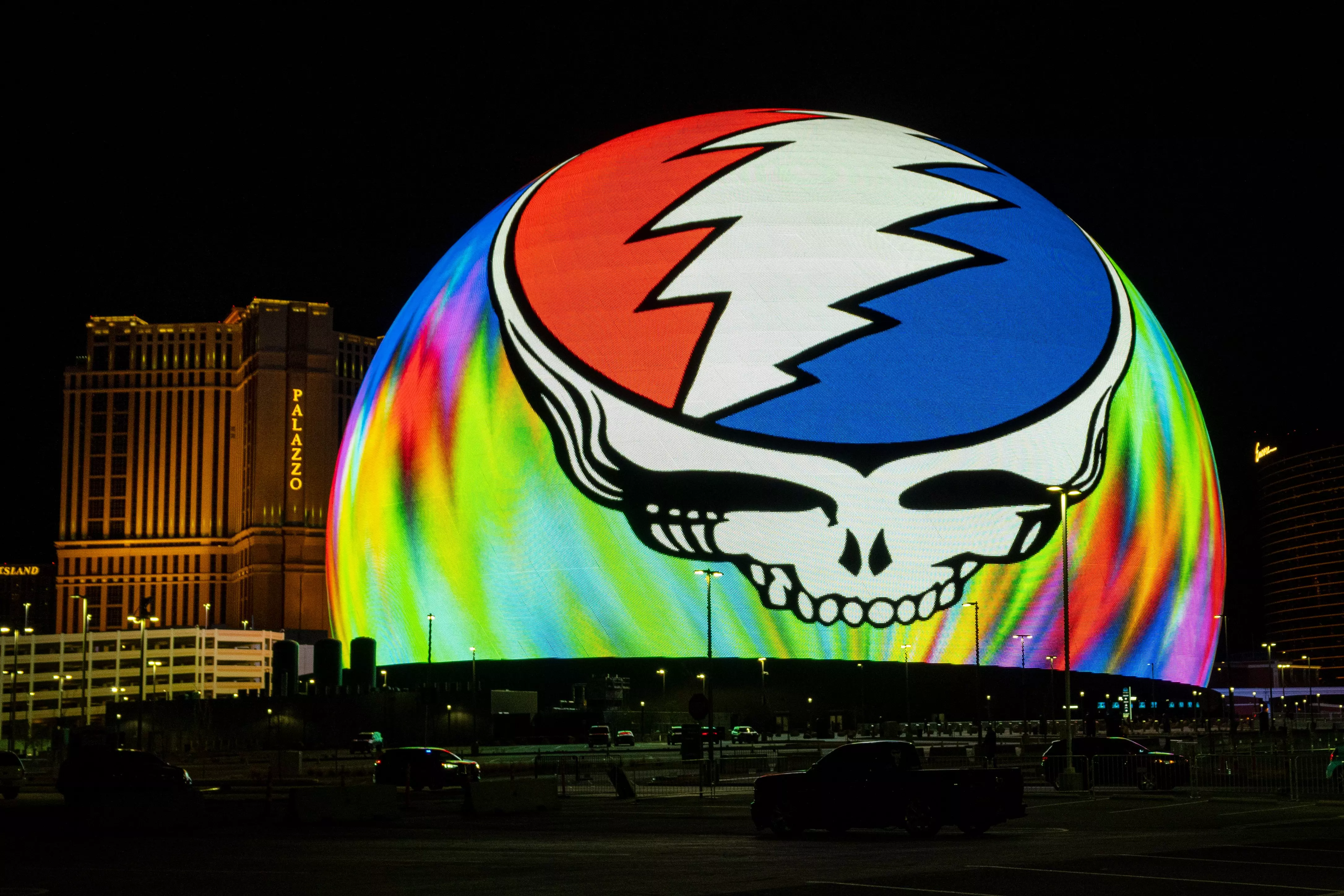
Why Dead & Company's Sphere Residency Is The Ultimate Trip
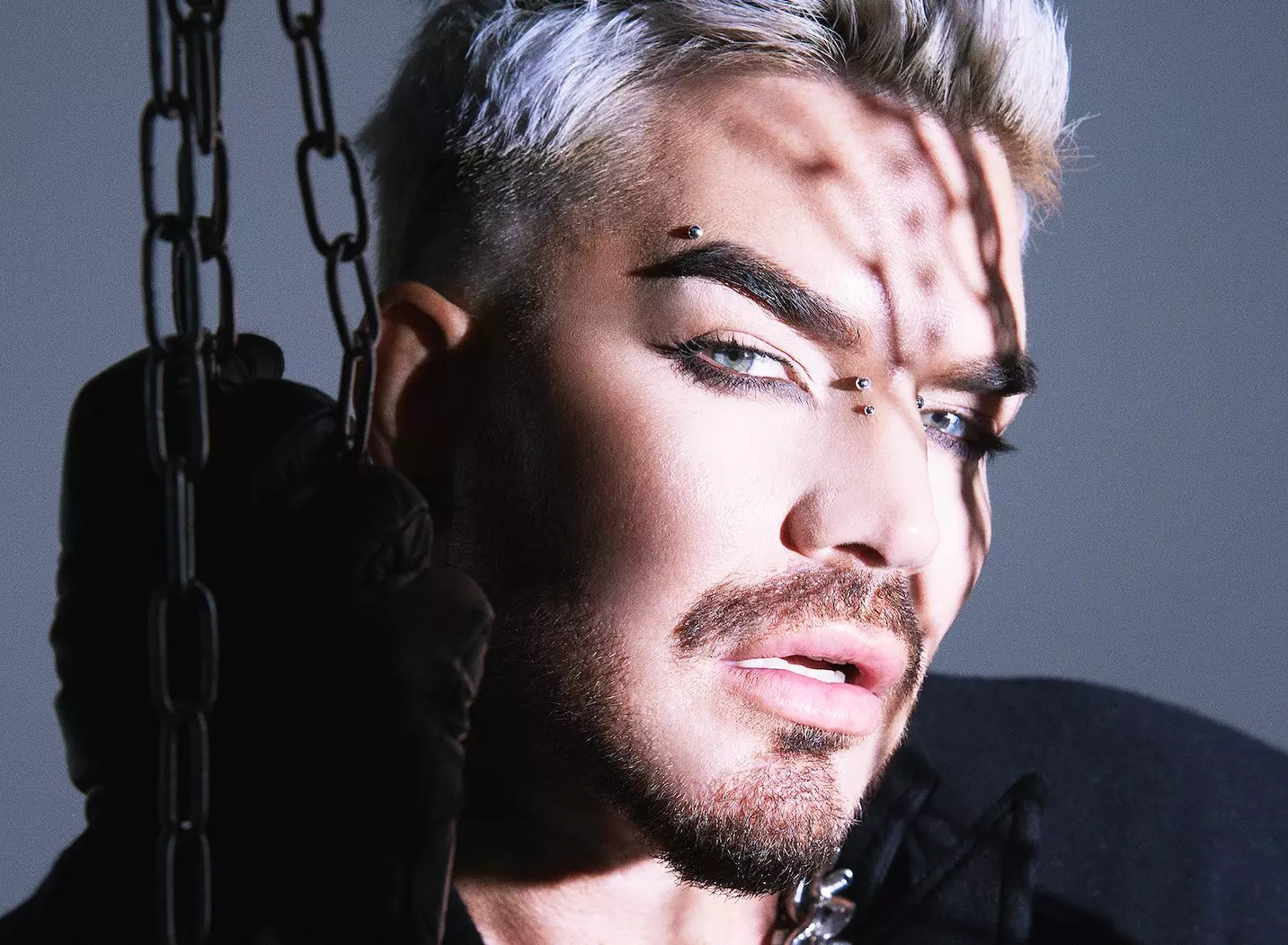
Inside Adam Lambert's 'Afters': How '90s House, Clubbing & Lots Of Sex Inspired His Most "Liberated" Music Yet
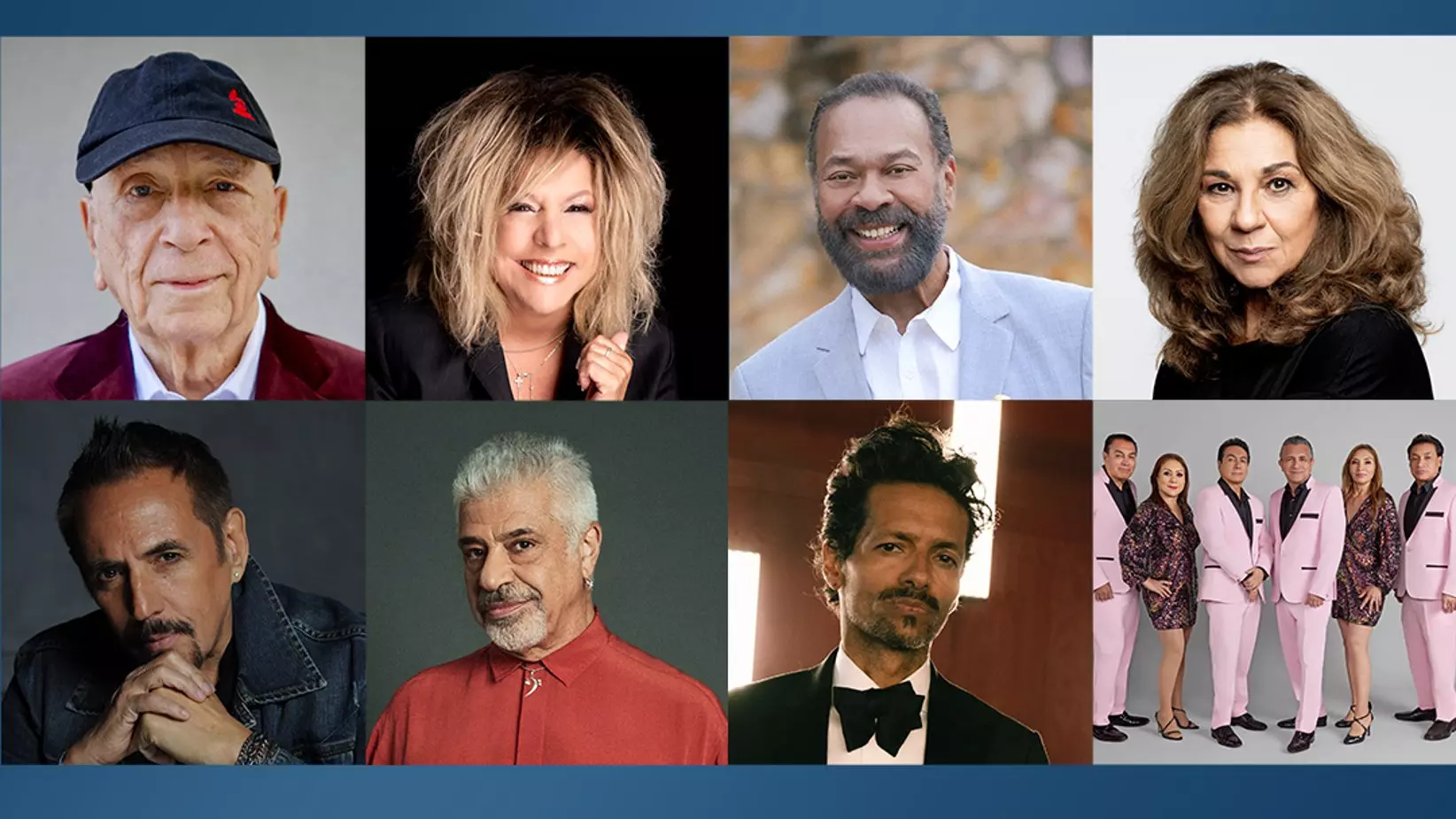
The Latin Recording Academy Announces 2024 Special Awards Recipients: Los Ángeles Azules, Draco Rosa, Albita, Lolita Flores & More

Watch Alok & Brô Mc's Perform "Jaraha"
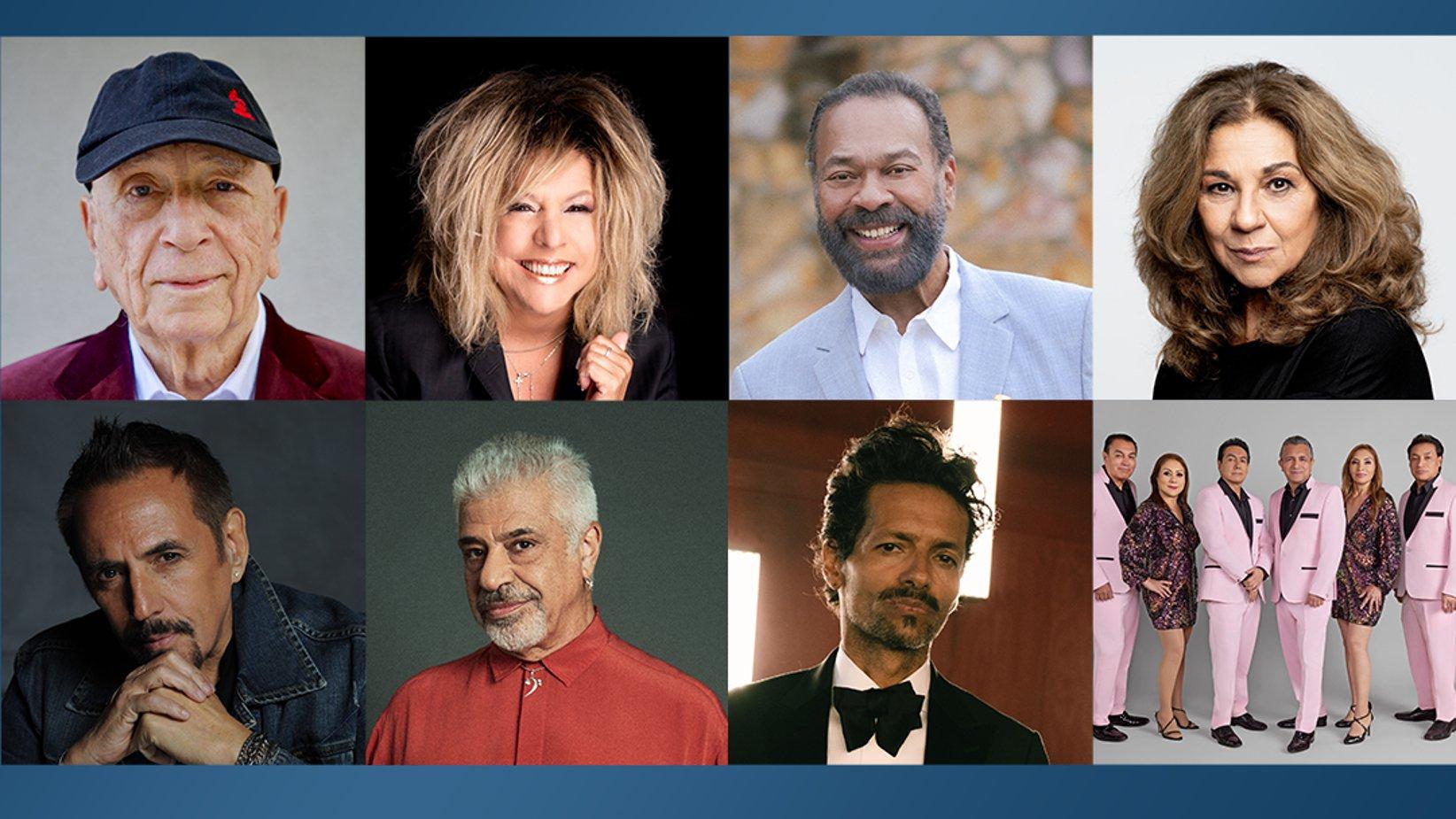
Photo credits: Fabian Rincon Cano; Innercatfilms; Angel Peña Ramos; Javier Naval; Felix Limon; Nathalia Mahecha; FotosdeEstudio_PHGabrielMachado
news
The Latin Recording Academy Announces 2024 Special Awards Recipients: Los Ángeles Azules, Draco Rosa, Albita, Lolita Flores & More
The Latin Recording Academy's 2024 Special Awards honorees also include Alejandro Lerner, Lulu Santos, Ángel ‘Cucco’ Peña and Chucho Rincón. The honorees will be celebrated during Latin GRAMMY Week ahead of the 2024 Latin GRAMMYs.
The Latin Recording Academy today announced its 2024 Special Awards recipients: Albita, Lolita Flores, Alejandro Lerner, Los Ángeles Azules, Draco Rosa, and Lulu Santos will receive this year's Latin Recording Academy Lifetime Achievement Award as part of its annual Special Awards Presentation. Additionally, Ángel ‘Cucco’ Peña and Chucho Rincón will receive the Latin Recording Academy's Trustees Award.
The Lifetime Achievement Award is presented to performers who have made creative contributions of outstanding artistic significance to Latin music and its communities. The Trustees Award is bestowed on individuals who have made significant contributions to Latin music during their careers in ways other than performance. Both distinctions are voted on by the Latin Recording Academy's Board of Trustees.
“It is with great pride that we honor these musical legends — who continue redefining our Latin music and heritage — and we look forward to celebrating them as part of our Latin GRAMMY 25th anniversary festivities in November,” Latin Recording Academy CEO Manuel Abud said in a statement.
The honorees will be celebrated during a private event as part of Latin GRAMMY Week on Sunday, Nov. 10, in Miami, ahead of the 2024 Latin GRAMMYs. Alex Hadad will serve as executive producer of the Special Awards Presentation, working under the direction of the Latin Recording Academy’s production team led by Ayleen Figueras.
The 2024 Latin GRAMMYs, officially known as the 25th Latin GRAMMY Awards, will take place Thursday, Nov. 14, in Miami at Kaseya Center. The three-hour telecast will air live on Univision, Galavisión, and ViX on Thursday, Nov. 14, beginning at 8 p.m. ET/PT (7 p.m. CT), preceded by a one-hour pre-show starting at 7 p.m. ET/PT. Nominations for the 2024 Latin GRAMMYs will be announced Tuesday, Sept. 17.
The 2024 Latin GRAMMYs mark the 25th anniversary of the Latin GRAMMY Awards. This year, the Latin GRAMMYs will debut a new Field and two new Categories: Best Latin Electronic Music Performance, housed within the new Electronic Music Field, and Best Contemporary Mexican Music Album (Regional-Mexican Field).
Ahead of the 2024 Latin GRAMMYs, the Latin Recording Academy will host the official Latin GRAMMY Week 2024, which includes multiple events throughout Miami-Dade County, including marquee events like Leading Ladies of Entertainment, the Best New Artist Showcase, Special Awards Presentation, Nominee Reception, Person of the Year, and the Premiere Ceremony preceding the telecast. This year, 18-time Latin GRAMMY winner and two-time GRAMMY winner Carlos Vives will be honored as the 2024 Latin Recording Academy Person of the Year. More details on the official Latin GRAMMY Week 2024 events and calendar will be announced in the coming months.
Learn more about the Latin Recording Academy’s 2024 Special Awards recipients below:
2024 Lifetime Achievement Award Honorees
Albita (Cuba)
One of the most exuberant ambassadors of Latin culture in the United States, Latin GRAMMY-winner Albita has championed the rollicking beauty of Cuban music since the release of her debut album in 1988. The daughter of a popular folk duo, Albita Rodríguez was born in Havana in 1962. Noted for the fiery combustion of her vocal cords and a precise understanding of Cuban musical tradition, Albita reignited her career after she left Cuba and moved to Miami in 1993. Her breathtaking live performances at Florida nightclubs resulted in a recording contract with Emilio Estefan’s Crescent Moon label.
Released in 1995, her U.S. debut, No Se Parece A Nada, included one of her biggest hits: the brassy tropical anthem “Qué Manera de Quererte,” as well as a velvety bolero — a genre in which she also excels. A prolific songwriter, Albita built up a prodigious discography of original material, fusing the essence of son cubano with traditional trova and balada. The hostess of a highly successful television show, “La Descarga Con Albita,” she also showcased her formidable acting chops in productions of the Broadway musicals “The Mambo Kings,” “Carmen La Cubana,” and “Havana.” Albita continues actively recording new music and performing in front of enthusiastic audiences all over the world.
Lolita Flores (Spain)
María Dolores González Flores was born in Madrid in 1958 and was only 17 when she released a hugely successful debut album, Amor, Amor. In 1976, her second album featured the smash “No Renunciaré,” an impossibly nostalgic balada marked by an ornate arrangement and her gritty performance. During the 1980s, Lolita became a beloved pop star throughout the Americas, and in the 1990s, she developed a parallel career as an award-winning actress and television presenter. The daughter of singers Lola Flores and Antonio González ‘El Pescaílla’ and sister of Rosario and the late Antonio Flores, Lolita found a distinctive personal approach anchored on the gorgeous texture of her vocals and an eclectic repertoire that never ceases to surprise. In 2001, the album Lola, Lolita, Lola triumphed with an irresistible cover of the Cuban standard “Sarandonga,” which her father had recorded in 1966. In later decades, Lolita expanded her palette with sophisticated albums such as 2007’s Sigue Caminando, which veered into bossa nova, jazz, and pop-rock.
Alejandro Lerner (Argentina)
A thoughtful singer/songwriter anchored on his impeccable keyboard technique, Alejandro Lerner is the most covered Latin artist of his generation. Born in Buenos Aires in 1957, Alejandro Federico Lerner began his career as a teenager, playing with various legends of 1970s Argentine rock. Released in 1982, his solo debut, Alejandro Lerner Y La Magia, showcased the qualities that would soon garner him millions of fans: solid musicianship, the raw honesty of his lyrics, and a natural gift for evoking delicate, nocturnal moods. Inspired by Argentina’s return to democracy, 1983’s “Todo A Pulmón” was recorded by Spanish star Miguel Ríos and became an international hit. The mutual admiration that he shared with Mexican balada icon Armando Manzanero resulted in several successful tours together. Alternating between his native Argentina and Los Angeles, Lerner collaborated with Carlos Santana on the 2002 album Shaman and toured with the guitarist. He has also worked with Carole King, Luis Miguel (on the 1996 mega-hit “Dame”), Celine Dion, Air Supply, Gino Vannelli, Paul Anka, Alan Parsons, and Barry Gibb, among many other luminaries. In 2005, he was enlisted by Disney to perform the songs in the Spanish version of Chicken Little and to compose an original song for the closing credits of the animated film. A tireless performer, Lerner is still active in the recording studio and tours sold-out venues across the Americas.
Los Ángeles Azules (Mexico)
Founded in the Mexico City municipality of Iztapalapa in 1976 by the siblings of the Mejía Avante family, the group released their debut album in 1982. But it was in 1996 that the orchestra became a fundamental part of Mexican cumbia with “Cómo Te Voy A Olvidar.” Noted for their openness to collaborate with artists from other genres, Los Ángeles Azules revolutionized their sound — and the Latin music business — in 2013 by teaming up with legends from the Latin alternative field: Caifanes’ Saúl Hernández, Fabulosos Cadillacs’ Vicentico, and Ximena Sariñana, to name a few. Subsequent duets with Natalia Lafourcade (the retro charm of “Nunca Es Suficiente” in 2018), Argentinian artists (the brilliant fusion of De Buenos Aires Para El Mundo in 2020), and Carlos Santana (2023’s funky single “A Todos Los Rumberos,” with Panteón Rococó) solidified the band’s reign as one of the most beloved acts in all of Latin music.
Draco Rosa (Puerto Rico)
The remarkable musical career of Draco Rosa encompasses many facets — from boy band superstar to iconic rock en español pioneer and global hitmaker — all of them informed by his virtuoso vision and protean talent. Born in Long Island, New York, in 1969 to Puerto Rican parents, the Latin GRAMMY-winning singer, songwriter, and multi-instrumentalist Robert Edward Rosa Suárez got his first taste of fame as a member of Menudo. After a brief stint with rock band Maggie’s Dream, Rosa released two fundamental albums that shaped the 1990s wave of Latin American rock: 1994’s Frío and 1996’s Vagabundo. Delving into the pop machinery with the desire to subvert any and all expectations, Rosa co-wrote “Livin’ la Vida Loca” and other pop smashes for former Menudo bandmate Ricky Martin and also produced songs for Julio Iglesias. Always invested in exploring new ground, he developed a solo career that switches effortlessly from epic alternative rock (2018’s Monte Sagrado) to soulful ambient sonics (2021’s Sound Healing 1:11). This year marked the release of Reflejos de Lo Eterno, a transcendent covers collection of Latin alternative classics.
Watch: Draco Rosa Talks On Tour Backstage Must-Haves | Herbal Tea & White Sofas
Lulu Santos (Brazil)
A prodigiously talented guitarist, singer, and composer able to infuse an ethereal sense of romance into every song he touches, Lulu Santos has spent the past five decades carving a distinguished path in Brazilian music. Born in Rio de Janeiro in 1953, Luiz Maurício Pragana dos Santos abandoned his studies in favor of the hippie movement and a music career. After founding the ambitious progressive rock outfit Vímana, Santos launched a solo career in 1982 with the album Tempos Modernos. The jangly self-titled track and the lush “De Repente Califórnia” epitomized the MPB aesthetic of the time: sunny pop-rock chords, oblique melodies, and echoes of new wave. His third LP, 1984’s Tudo Azul, established him as one of the key Brazilian rockers of the decade. Still, Santos’ tireless quest for novel forms of expression found him incorporating dance, funk, and R&B into his 1990s output. A passionate champion of fellow musicians, Santos released poignant albums revisiting the songbooks of fellow legends Roberto and Erasmo Carlos (2013) and Rita Lee (2017). He remains active in music, having recently released a new EP of remixes — Atemporal — in May 2024.
2024 Trustees Award Honorees
Ángel ‘Cucco’ Peña (Puerto Rico)
Marc Anthony. Celia Cruz. Willie Colón. Gilberto Santa Rosa. These are just a few of the many stars whose work was enhanced by the talent of composer, producer, and orchestrator Ángel ‘Cucco’ Peña, a living legend of Puerto Rican music. Born in Santurce in 1948, Peña attended Puerto Rico’s Conservatory of Music and later sharpened his skills as a performer with tropical ensemble Orquesta Panamericana. His ability to infuse his Puerto Rican roots into every recording he touched cemented his sterling reputation as a sympathetic collaborator of other artists. In 1993, he co-produced Willie Colón’s classic LP Hecho en Puerto Rico, including the salsa anthem “Idilio.” The late 1990s were a time of fiery creativity for Peña. He produced Marc Anthony’s third album, Contra la Corriente, took over the musical direction on Gilberto Santa Rosa’s live album En Vivo Desde El Carnegie Hall, and contributed to albums by Ricky Martin (the pop blockbuster Vuelve), Chayanne and Celia Cruz. The Latin GRAMMY winner has worked extensively in film, advertising and television specials and remains an active ambassador of Latin music.
Chucho Rincón (Mexico)
A prolific composer, producer and label executive, Latin GRAMMY winner Chucho Rincón is a pioneer of the Mexican recording industry and a guiding light within Latin music. Born in Ciudad Juárez, Chihuahua, in 1937, Jesús ‘Chucho’ Rincón Cárdenas grew up in Michoacán and learned to play the guitar at a young age. After moving to Mexico City and taking acting and voice lessons, he became the lead vocalist for the soulful Trío Los Aguilillas in 1956. Rincón left the band in favor of a solo career and began writing songs in 1962. His charismatic presence and musical expertise facilitated a transition into a musical director with several labels. Working for Capitol, he signed many artists, including a young Joan Sebastian, whose career he would continue to shepherd decades later. In 1988, Rincón moved with his family to Spain where he became the musical director of the Orfeón label. He has produced over 300 albums by stars such as Alejandro Fernández, Chavela Vargas, and La Sonora Santanera and composed more than 200 songs, including the mega-hit “Quén Pompó.” Rincón continues producing music as part of a creative team with his son Fabián.
The Latest News About Latin Music
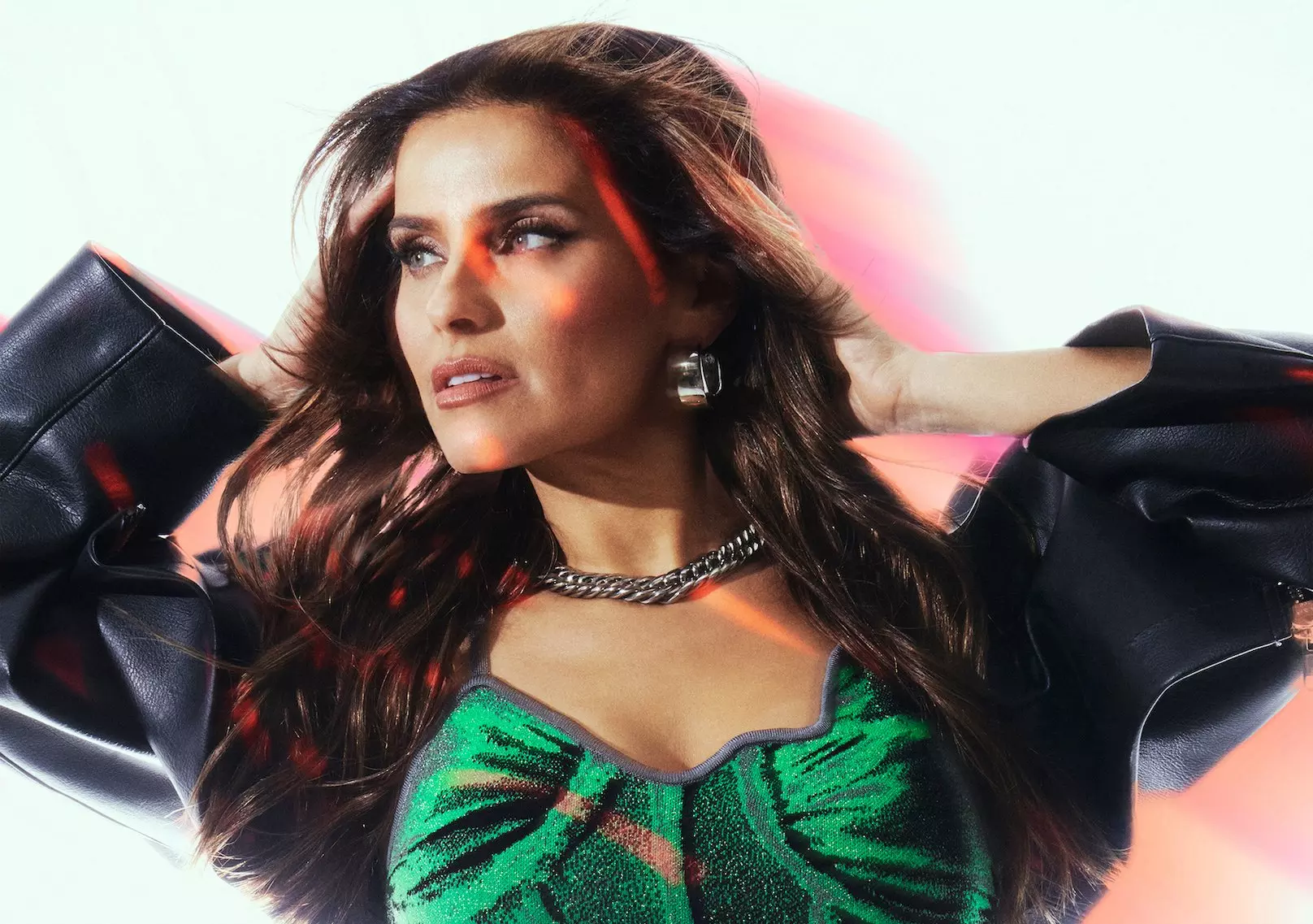
Nelly Furtado On How Remix Culture, ADHD & Gen Z Inspired Her New Album '7'
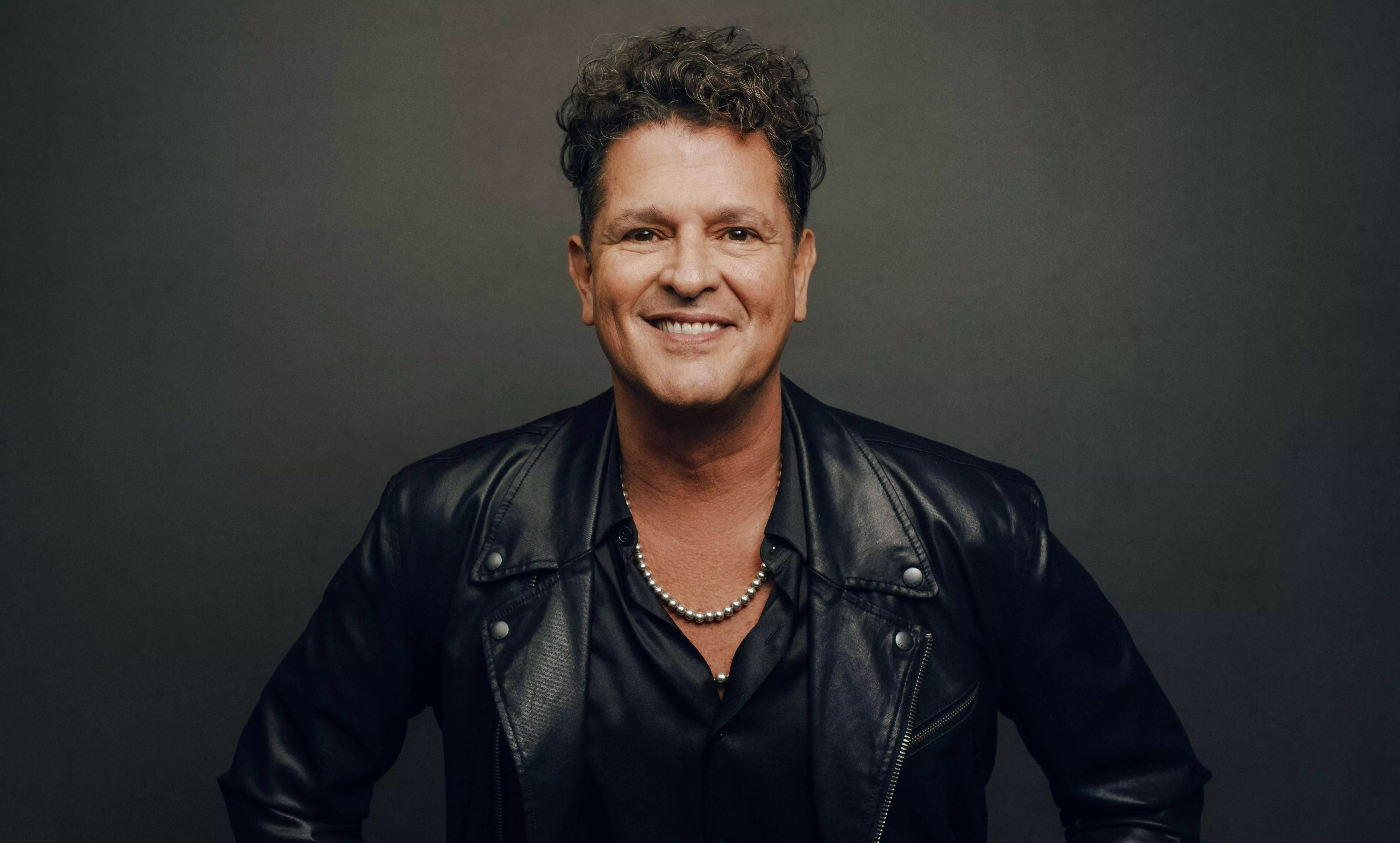
Carlos Vives Named The 2024 Latin Recording Academy Person Of The Year: What To Know About The Latin Music Icon
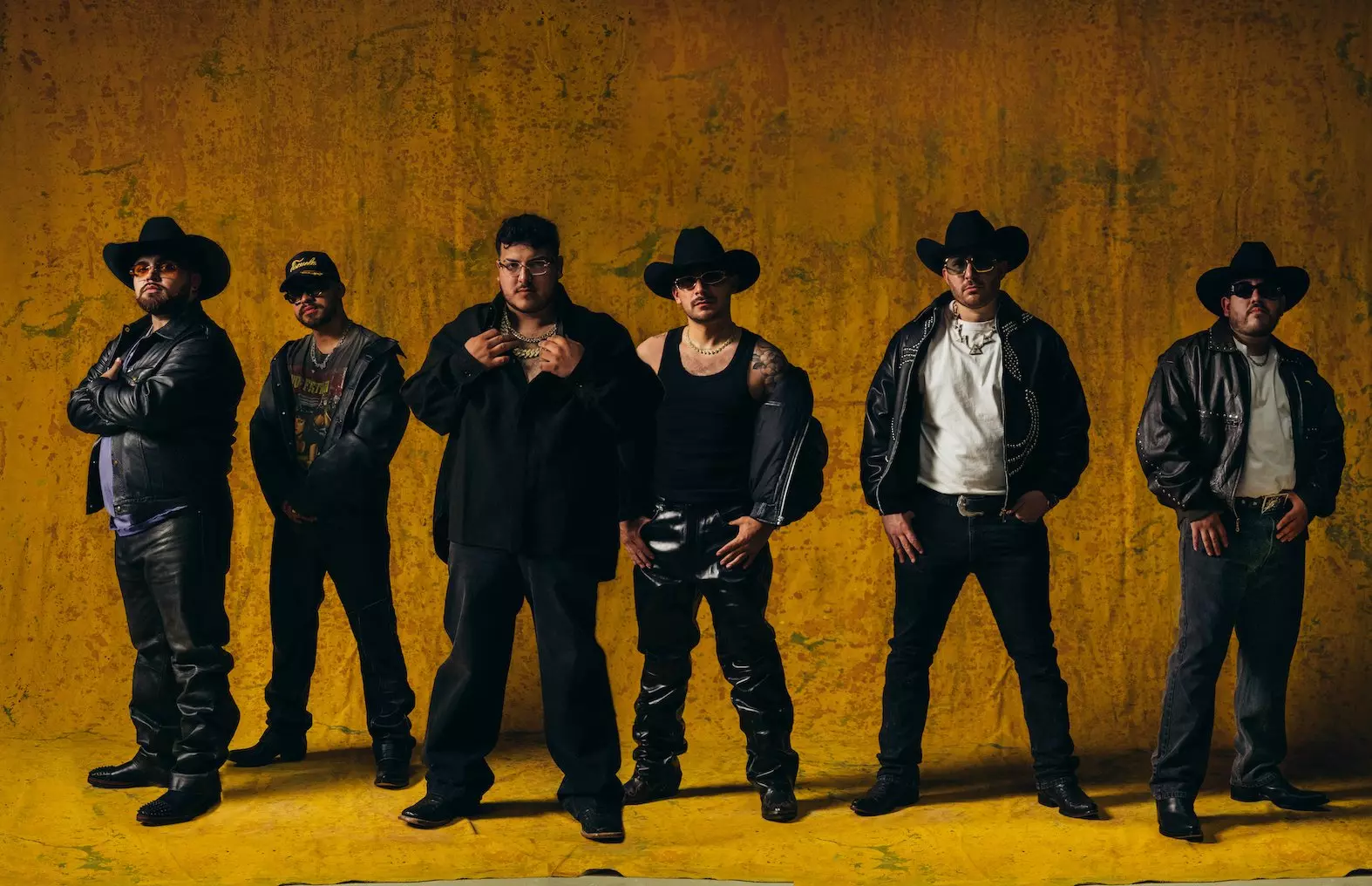
Grupo Frontera On 'Jugando A Que No Pasa Nada' & Fully Expressing Themselves: "This Album Was Made From The Heart"
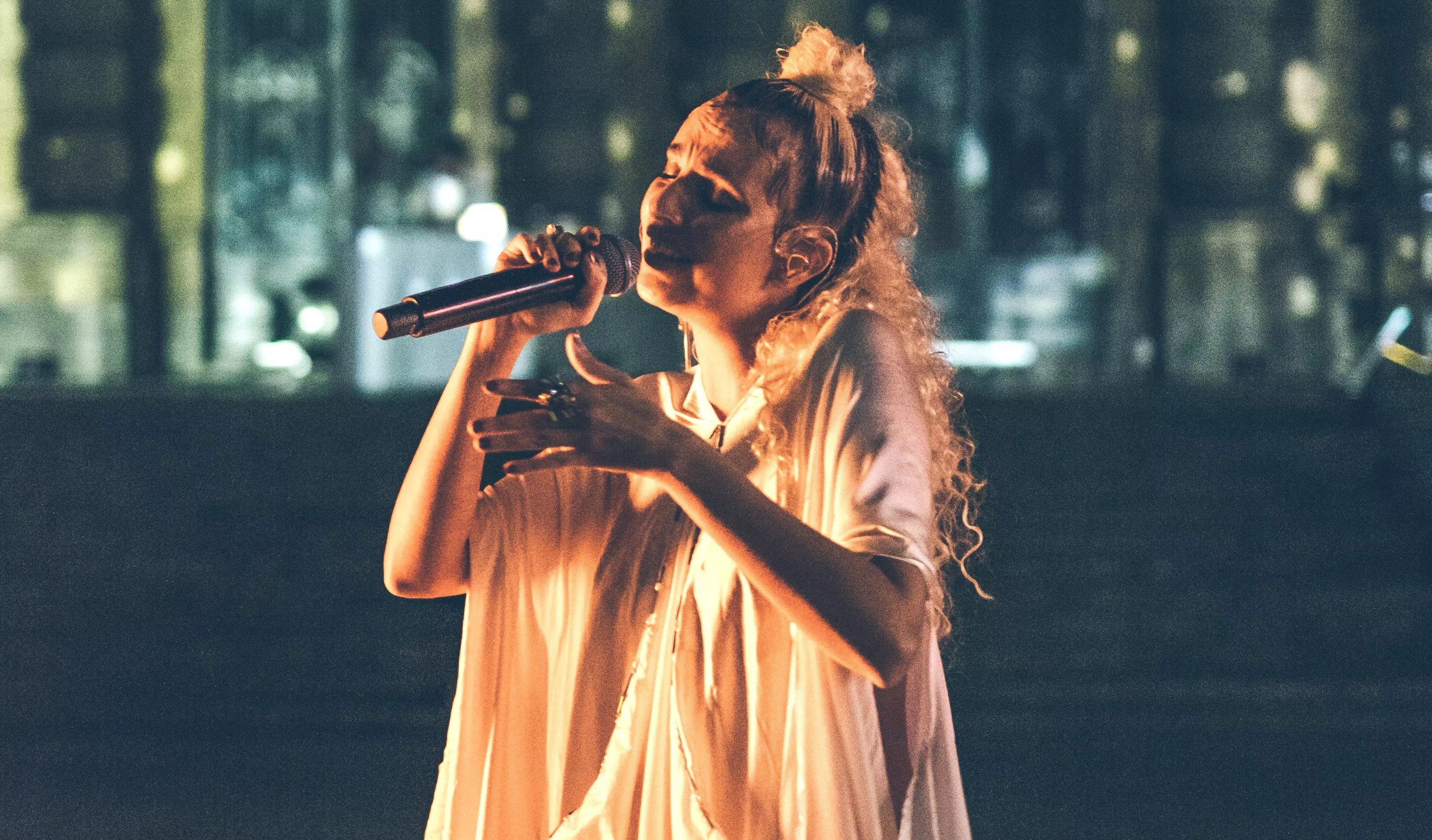
5 Artists Leading A New Wave Of Latin Trip-Hop & Downtempo: Céu, Natalia Clavier & More
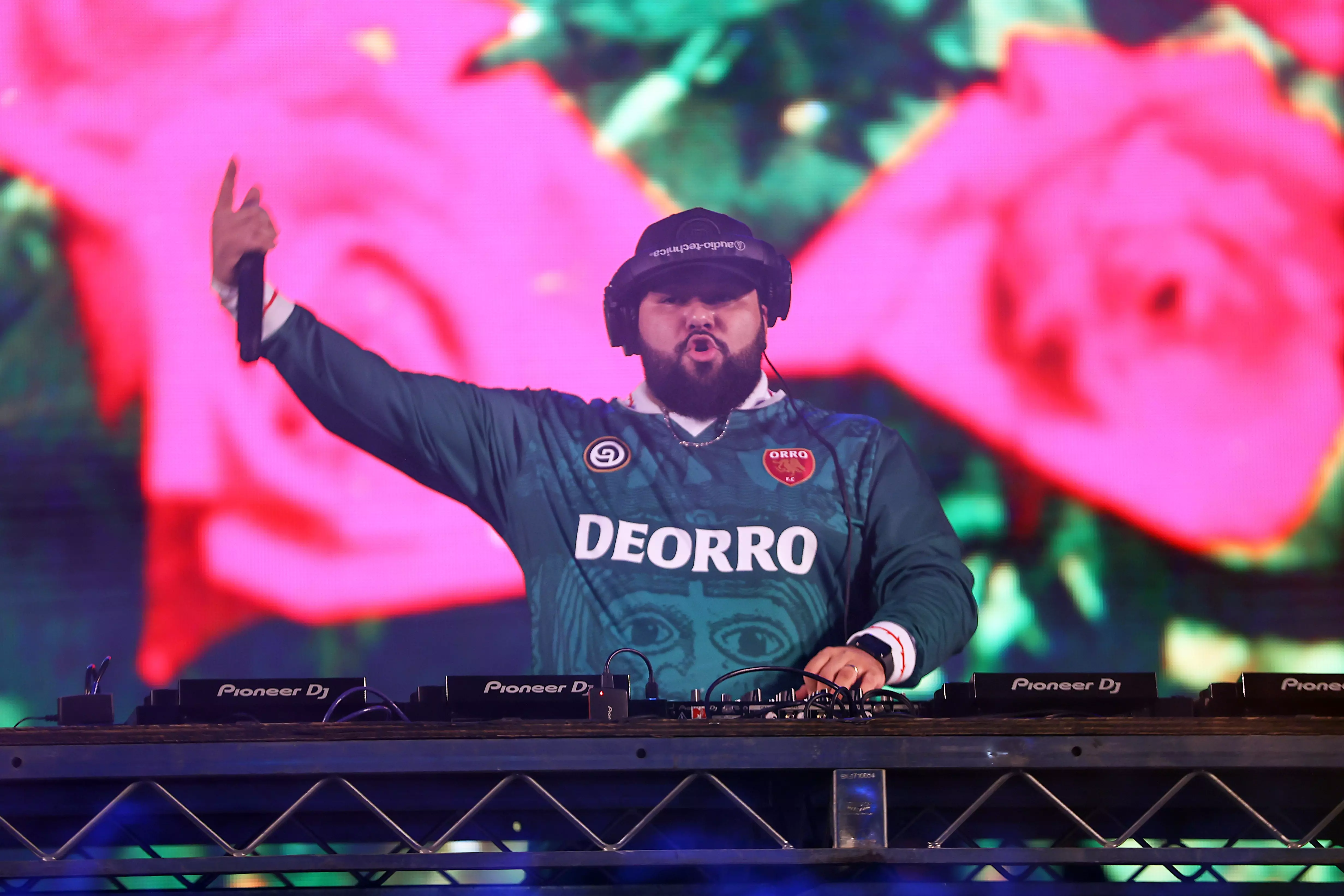
8 Essential Latin Electronic Releases: Songs And Albums From Bizarrap, Arca & More

Graphic Courtesy of CBS
news
The 2024 GRAMMYs Have Been Nominated For 5 Emmys: See Which Categories
The 2024 GRAMMYs telecast is nominated for Outstanding Variety Special (Live), Outstanding Production Design For A Variety Special, and three more awards at the 2024 Emmys, which take place Sunday, Sept. 15.
It’s officially awards season! Today, the nominees for the 2024 Emmys dropped — and, happily, the 2024 GRAMMYs telecast received a whopping five nominations.
At the 2024 Emmys, the 2024 GRAMMYs telecast is currently nominated for Outstanding Variety Special (Live), Outstanding Production Design for a Variety Special, Outstanding Lighting Design/Lighting Direction for a Variety Special, Outstanding Sound Mixing for a Variety Series or Special, and Outstanding Technical Direction and Camerawork for a Special.
Across these categories, this puts Music’s Biggest Night in a friendly head-to-head with other prestigious awards shows and live variety specials, including the Super Bowl LVIII Halftime Show starring Usher as well as fellow awards shows the Oscars and the Tonys.
2024 was a banner year for the GRAMMYs. Music heroes returned to the spotlight; across Categories, so many new stars were minted. New GRAMMY Categories received their inaugural winners: Best African Music Performance, Best Alternative Jazz Album and Best Pop Dance Recording. Culture-shaking performances and acceptance speeches went down. Those we lost received a loving farewell via the In Memoriam segment.
The 2025 GRAMMYs will take place Sunday, Feb. 2, live at Crypto.com Arena in Los Angeles and will broadcast live on the CBS Television Network and stream live and on demand on Paramount+. Nominations for the 2025 GRAMMYs will be announced Friday, Nov. 8, 2024.
For more information about the 2025 GRAMMY Awards season, learn more about the annual GRAMMY Awards process, read our FAQ (Frequently Asked Questions) section, view the official GRAMMY Awards Rules and Guidelines, and visit the GRAMMY Award Update Center for a list of real-time changes to the GRAMMY Awards process.
GRAMMY News, Performances & Highlights
2025 GRAMMYs To Take Place Sunday, Feb. 2, Live In Los Angeles; GRAMMY Awards Nominations To Be Announced Friday, Nov. 8, 2024
GRAMMY Awards Updates For The 2025 GRAMMYs: Here's Everything You Need To Know About GRAMMY Awards Categories Changes & Eligibility Guidelines
2024 GRAMMYs: See The Full Winners & Nominees List
10 Must-See Moments From The 2024 GRAMMYs: Taylor Swift Makes History, Billy Joel & Tracy Chapman Return, Boygenius Manifest Childhood Dreams
Watch All The Performances From The 2024 GRAMMYs: Tracy Chapman & Luke Combs, Billie Eilish, Olivia Rodrigo & More
2024 GRAMMYs: Miley Cyrus Celebrates "Flowers" GRAMMY Win With Jubilant Performance
2024 GRAMMYs: Dua Lipa Debuts "Training Season" & Slays "Houdini" In Mesmerizing Opening Performance
2024 GRAMMYs: Taylor Swift Makes GRAMMY History With Fourth Album Of The Year Win For 'Midnights'
2024 GRAMMYs: Billie Eilish Performs An Ethereal Rendition Of "What Was I Made For?"
2024 GRAMMYs: Watch Olivia Rodrigo Bleed Her Soul Dry With Dramatic "Vampire" Performance
SZA Wakes Up The 2024 GRAMMYs With A Performance Of "Snooze" & "Kill Bill"
2024 GRAMMYs: Luke Combs & Tracy Chapman Team Up For A Surprise Duet Version Of "Fast Car"
2024 GRAMMYs: Burna Boy's Fantastic Afro-Fusion Lights Up The Stage
2024 GRAMMYs: Travis Scott Turns Music's Biggest Night Into A Heated Utopia
2024 GRAMMYs: Watch Joni Mitchell Deliver Heartwarming Performance Of "Both Sides Now" In Her GRAMMY Stage Debut
U2 Performs "Atomic City" & Transports The 2024 GRAMMYs To Las Vegas
2024 GRAMMYs In Memoriam: Stevie Wonder, Lenny Kravitz & More Pay Tribute To Late Icons
2024 GRAMMYs: Billie Eilish Wins GRAMMY For Song Of The Year For "What Was I Made For?" From The 'Barbie' Soundtrack
2024 GRAMMYs: Miley Cyrus Wins The GRAMMY For Record Of The Year for "Flowers"
2024 GRAMMYs: Victoria Monét Wins The GRAMMY For Best New Artist
2024 GRAMMYs: Jack Antonoff Wins GRAMMY For Producer Of The Year, Non-Classical For The Third Year In A Row

Theron Thomas Wins Songwriter Of The Year, Non-Classical | 2024 GRAMMYs Acceptance Speech

Watch Taylor Swift Walk The 2024 GRAMMYs Red Carpet
2024 GRAMMYs: Jay-Z Receives Dr. Dre Global Impact Award
Relive The 2024 GRAMMYs Red Carpet: Interviews With Dua Lipa, Ice Spice & More
10 Acceptance Speeches That Made Us Laugh, Cry, & Smile At The 2024 GRAMMYs
Big First Wins At The 2024 GRAMMYs: Karol G, Lainey Wilson, Victoria Monét & More
13 Moments From The 2024 GRAMMYs You Might Have Missed
2024 GRAMMYs Red Carpet Fashion Highlights: Taylor Swift, Dua Lipa, Billie Eilish, Olivia Rodrigo, boygenius & More
9 Ways Women Dominated The 2024 GRAMMYs
Overheard Backstage At The 2024 GRAMMYs: What Jack Antonoff, Laufey & Other GRAMMY Winners Said
How The 2024 GRAMMYs Saw The Return Of Music Heroes & Birthed New Icons
Taylor Swift Announces New Album After 13th GRAMMY Win At The 2024 GRAMMYs
2024 GRAMMYs: Miley Cyrus Wins First-Ever GRAMMY For "Flowers"

Billie Eilish Wins Best Song Written For Visual Media For "What Was I Made For?" (From 'Barbie The Album') | 2024 GRAMMYs Acceptance Speech
2024 GRAMMYs: Karol G Wins The First GRAMMY Award Of Her Career For Best Música Urbana Album

Watch Ice Spice’s 2024 GRAMMYs Red Carpet Interview

boygenius Celebrate Their Three GRAMMY Wins At The CNB "First Look" Cam At The 2024 GRAMMYs Premiere Ceremony
In Memoriam (2023): The Recording Academy Remembers The Music People We Lost

Killer Mike Wins Best Rap Album For 'MICHAEL' | 2024 GRAMMYs Acceptance Speech
2024 GRAMMYs: Tyla Wins First-Ever GRAMMY Award For Best African Music Performance

Watch Billie Eilish & FINNEAS’ 2024 GRAMMYs Red Carpet Interview

Boygenius Wins Best Rock Song For "Not Strong Enough" | 2024 GRAMMYs Acceptance Speech
Burna Boy, Tyla And Africa's Moment At The 2024 GRAMMYs
